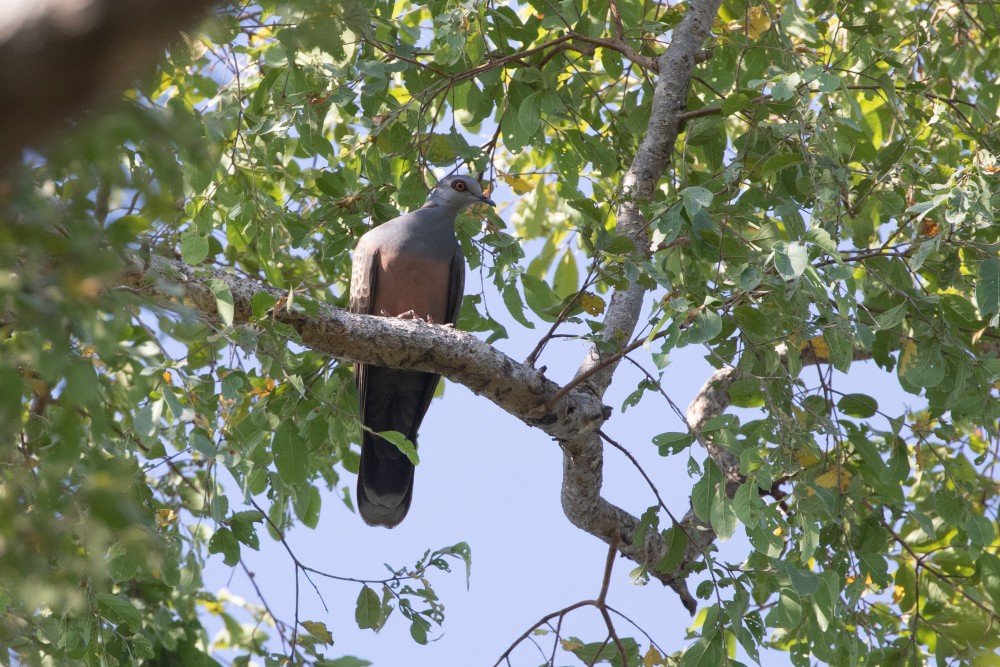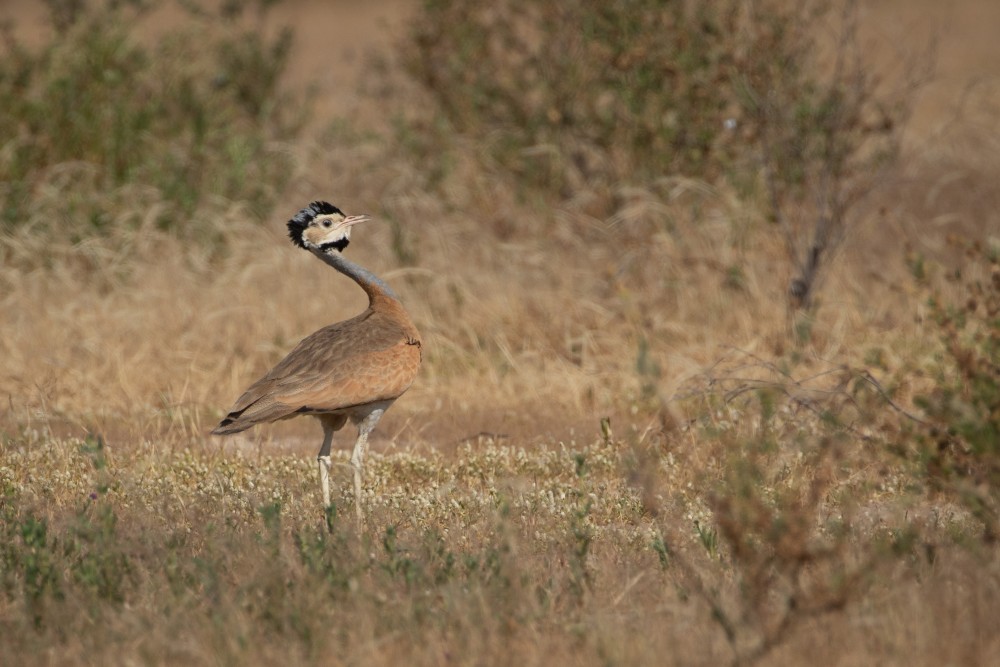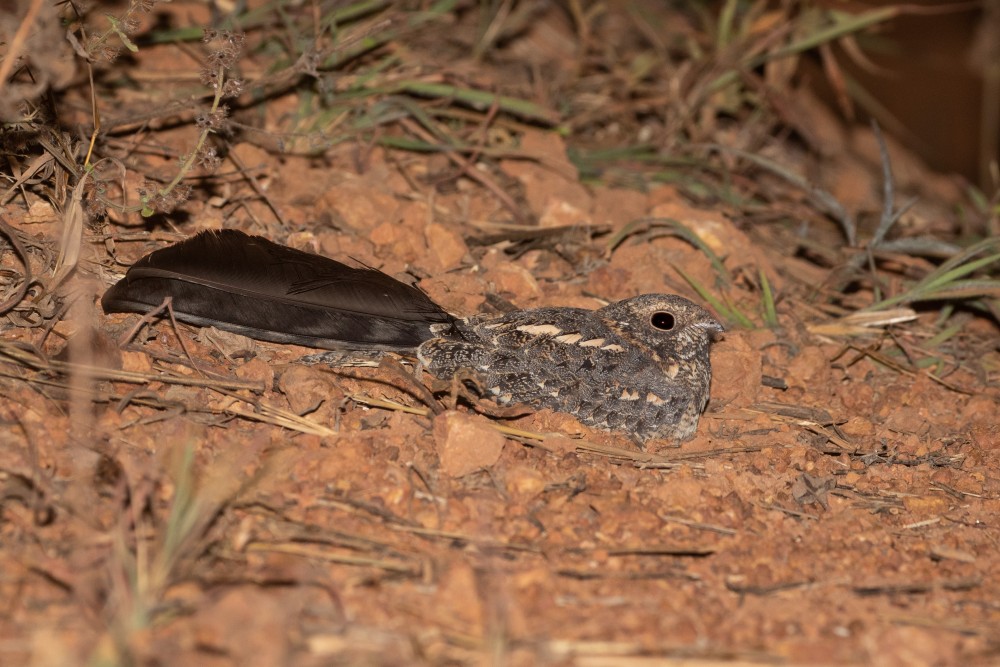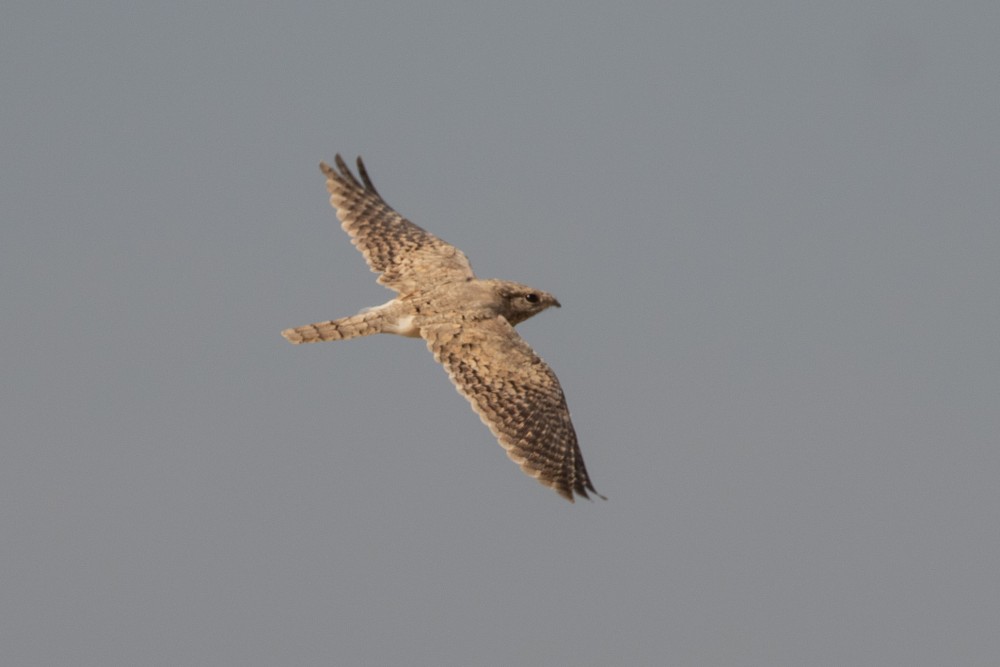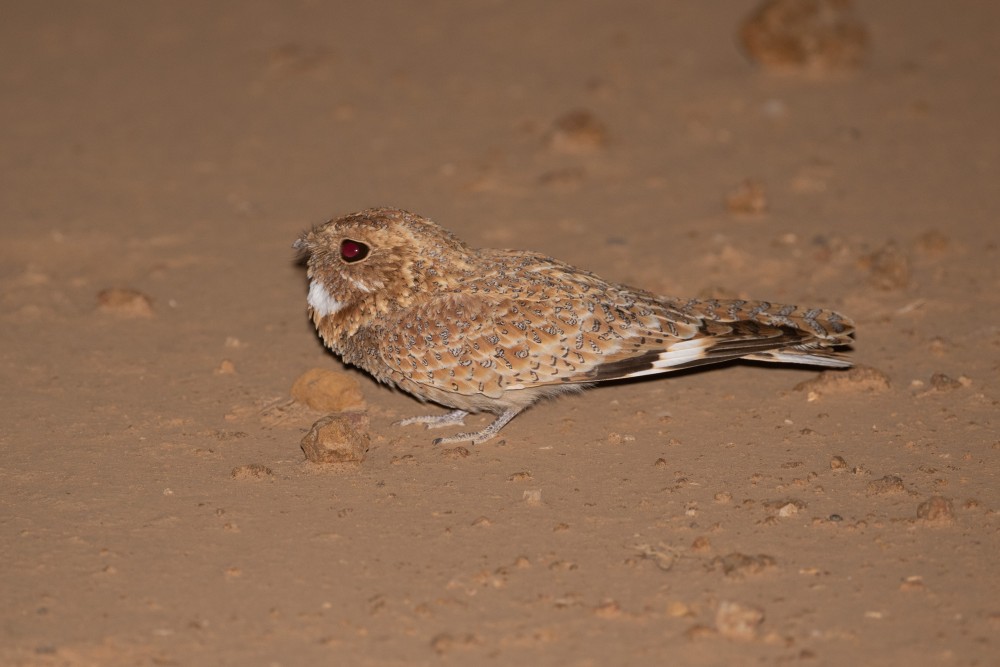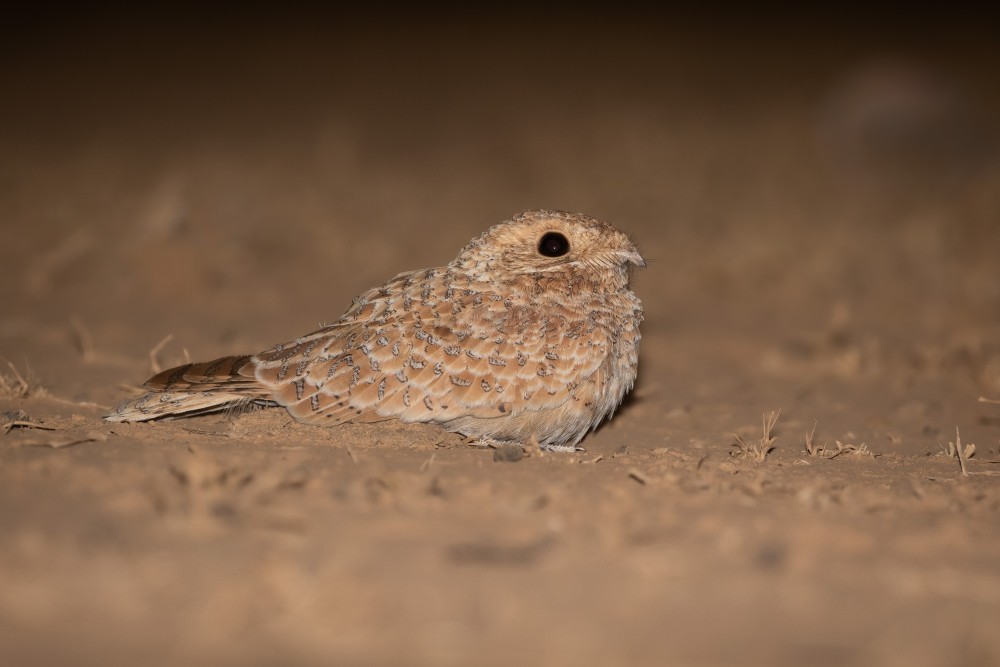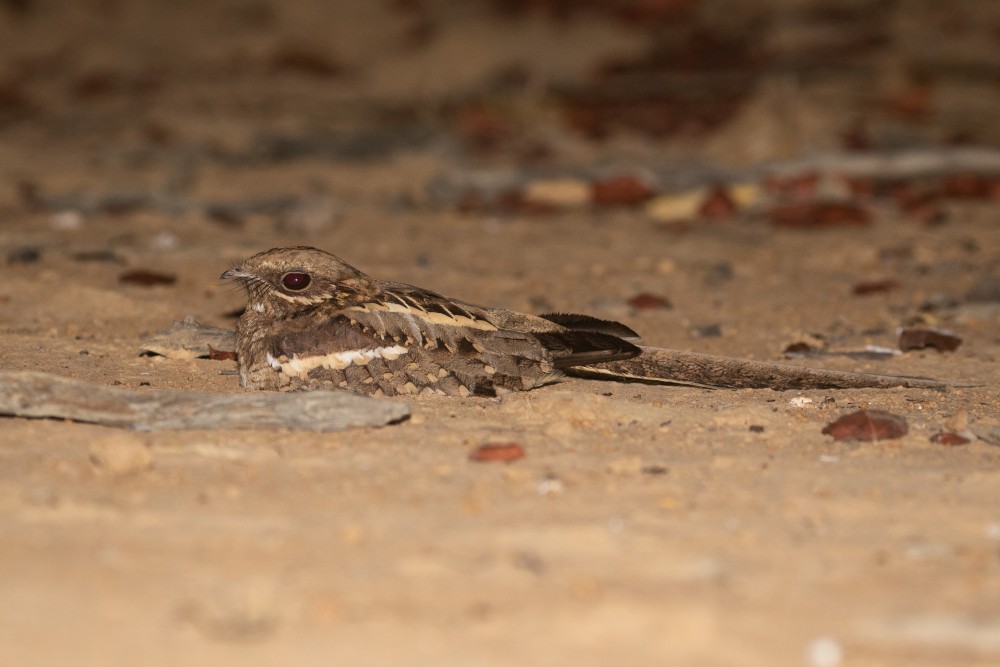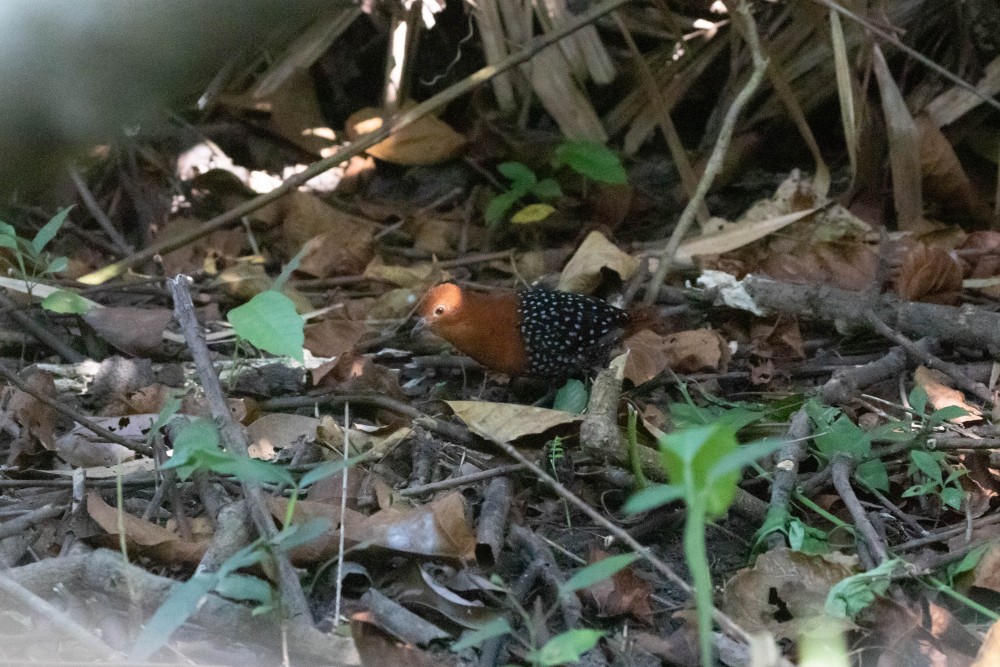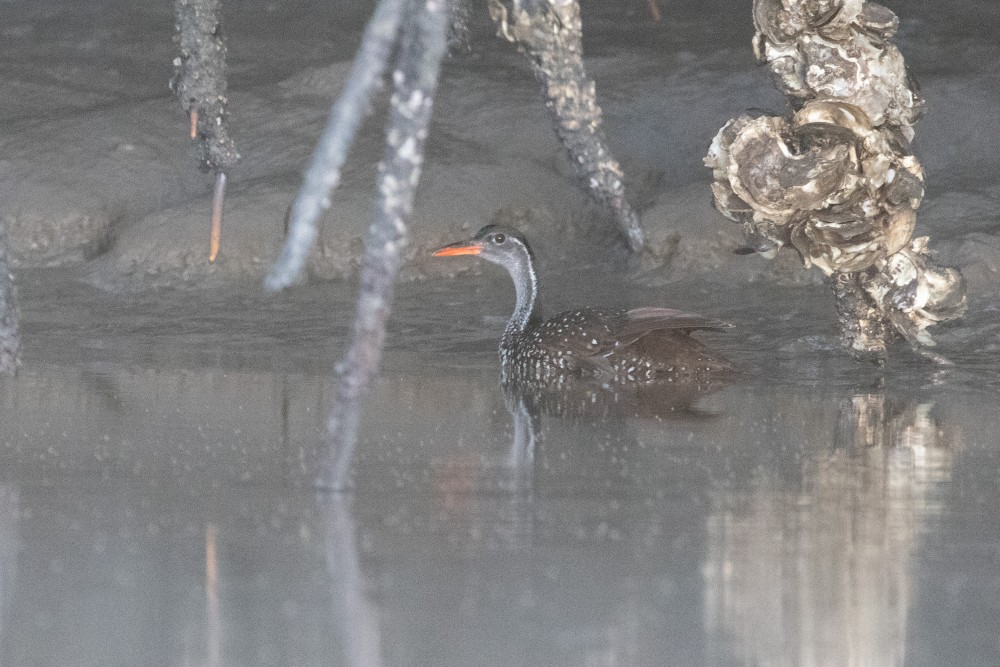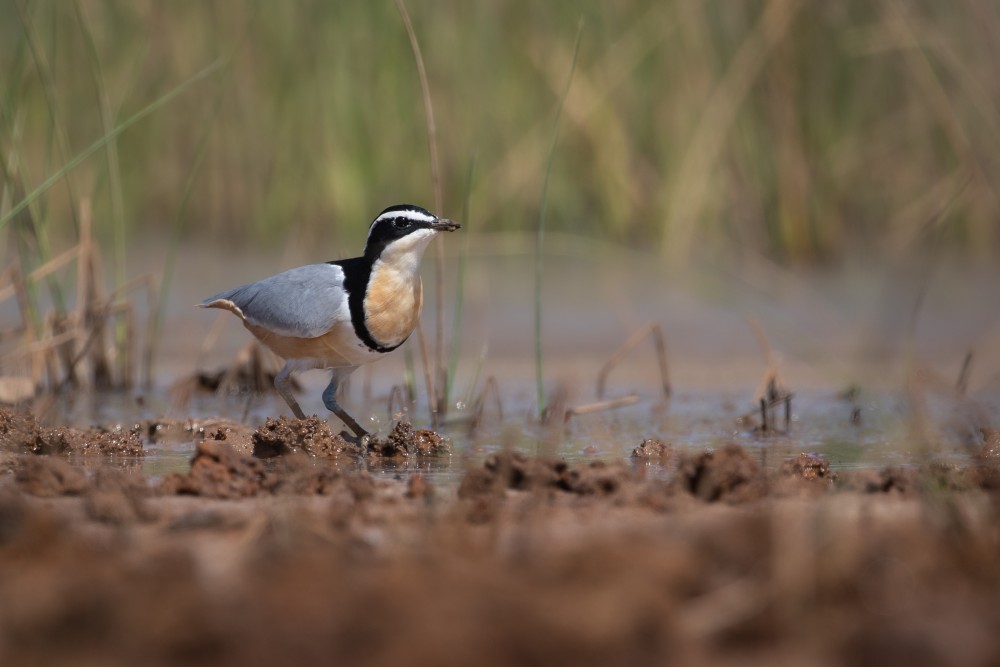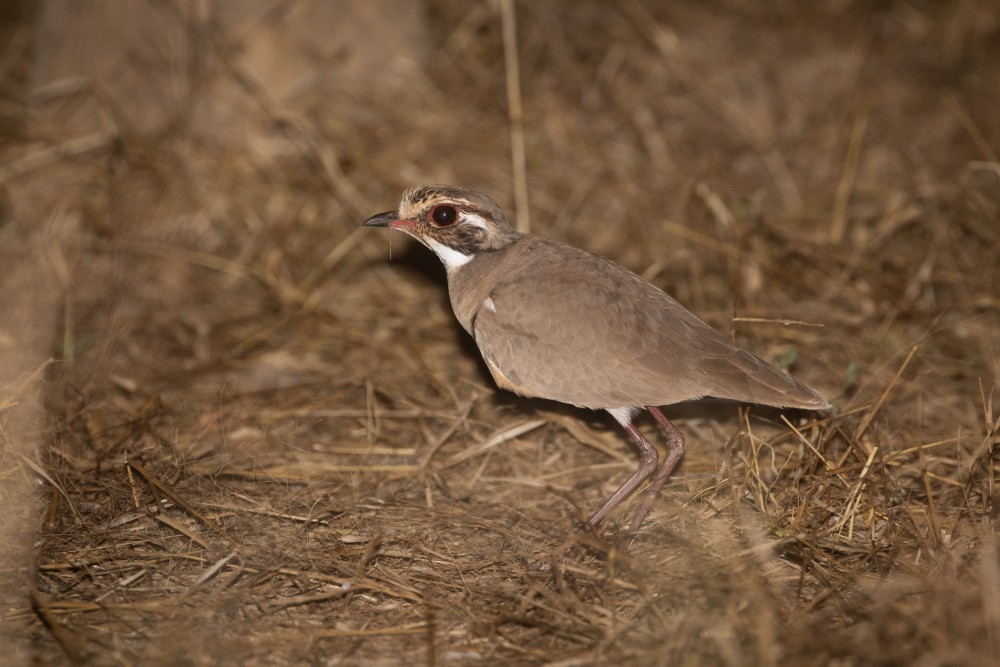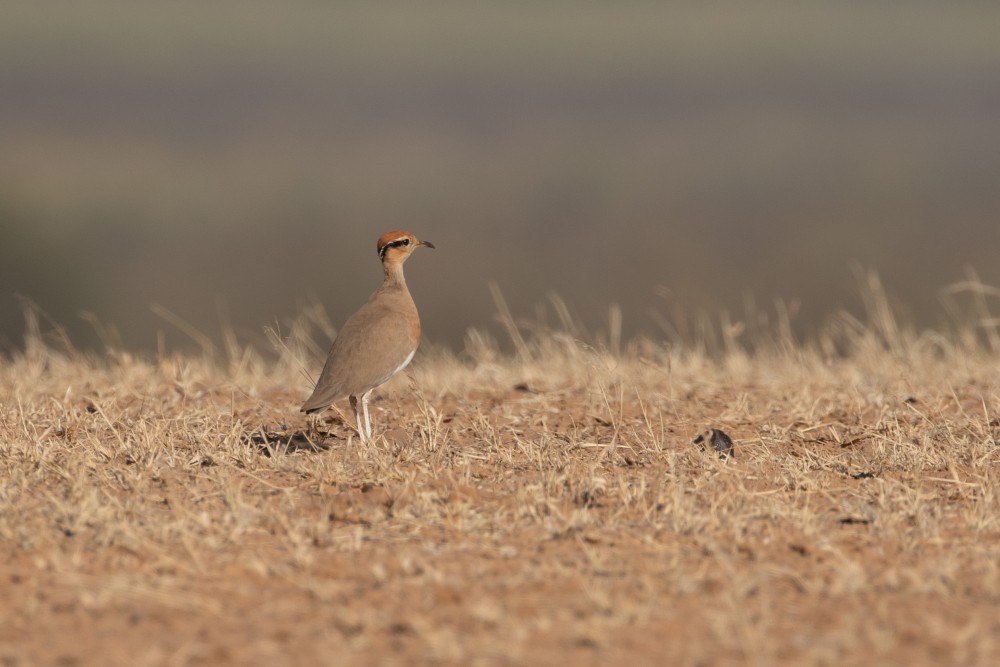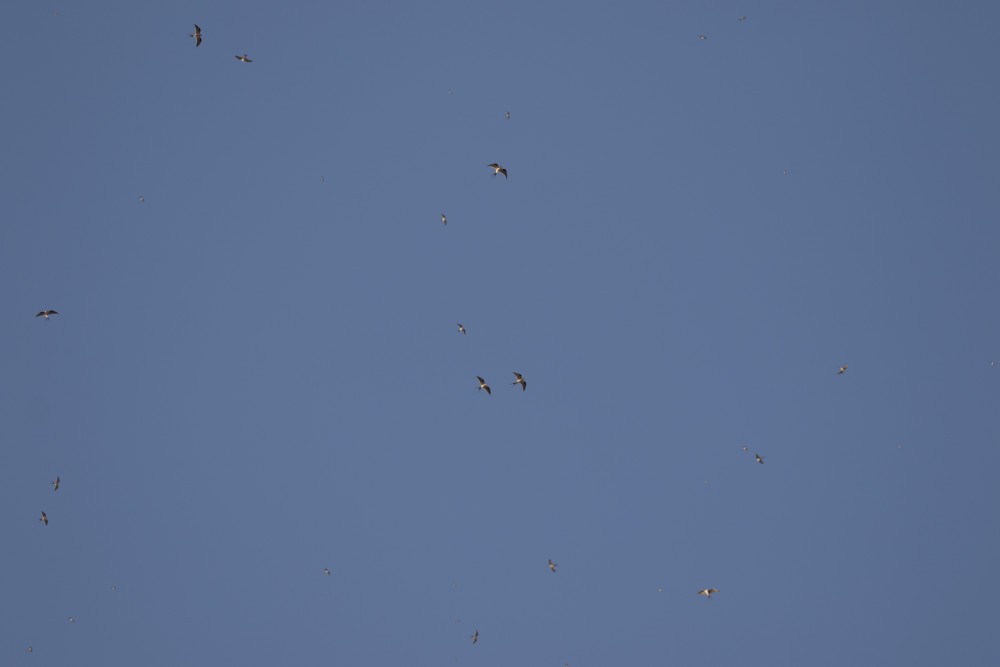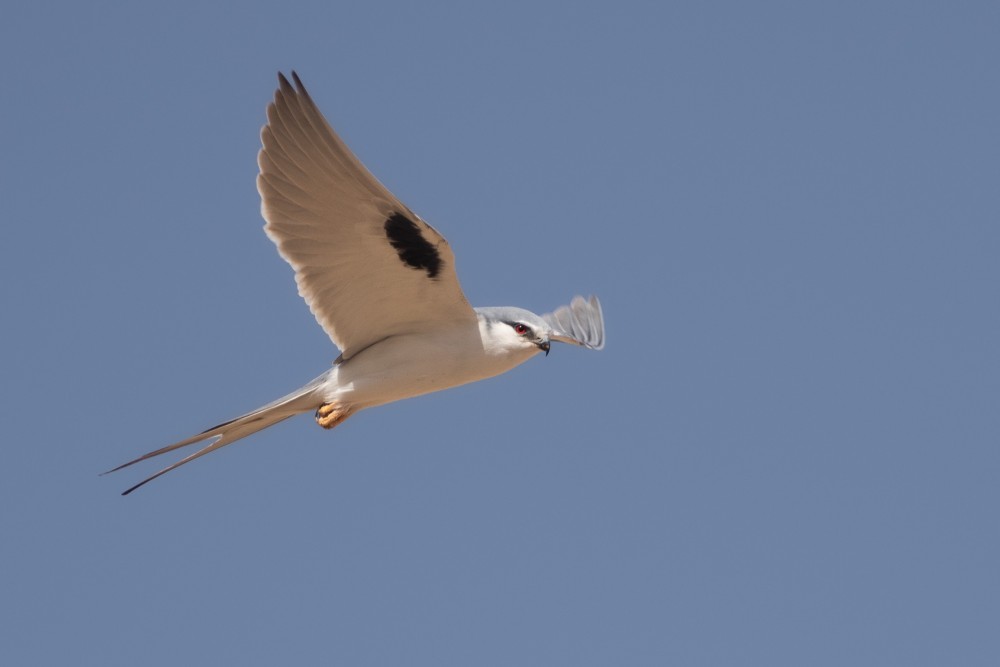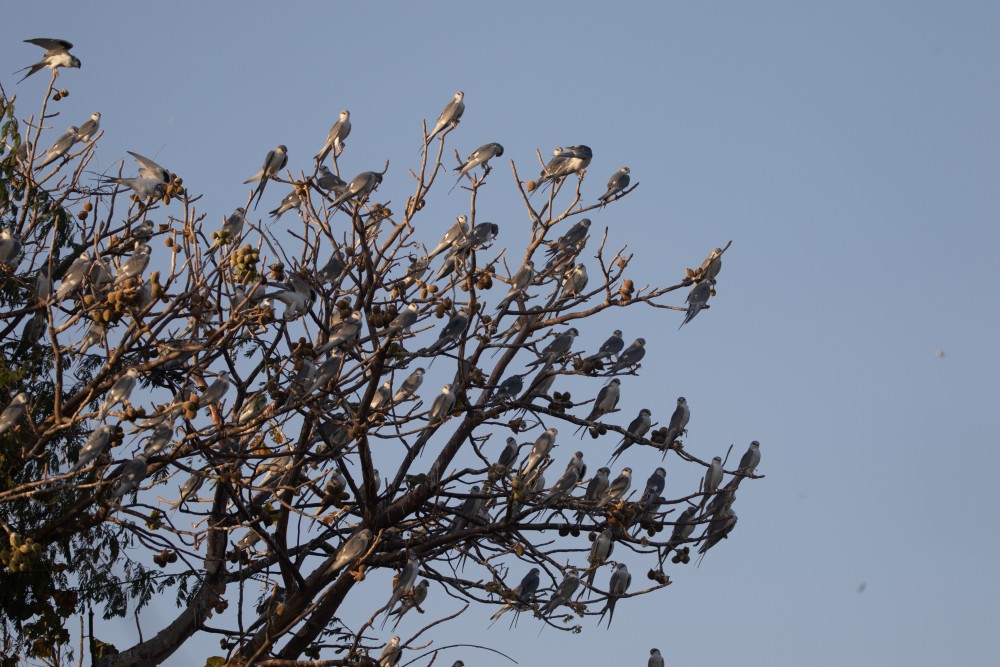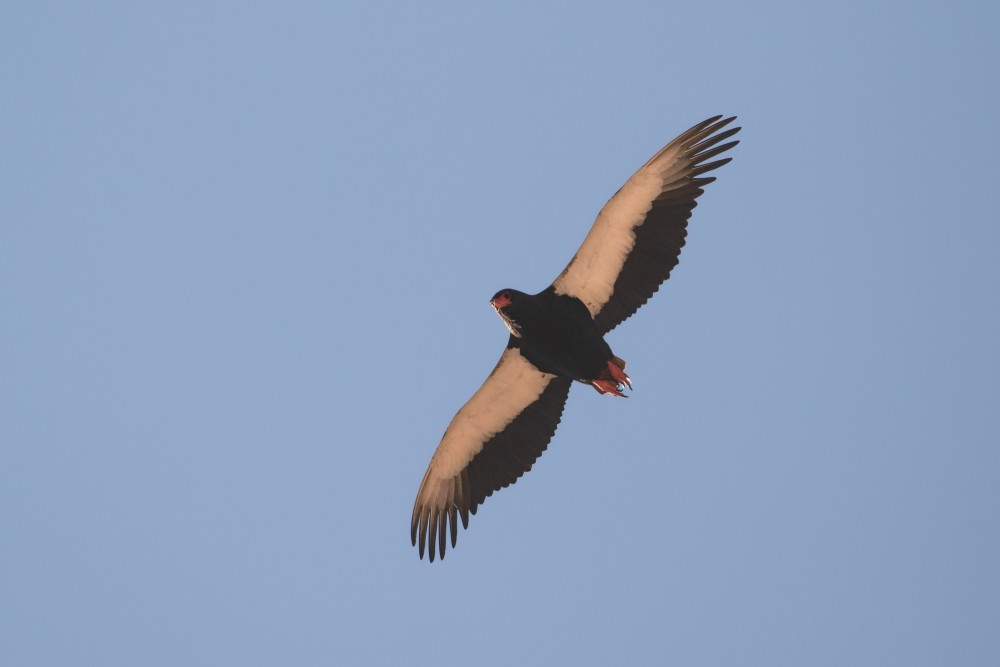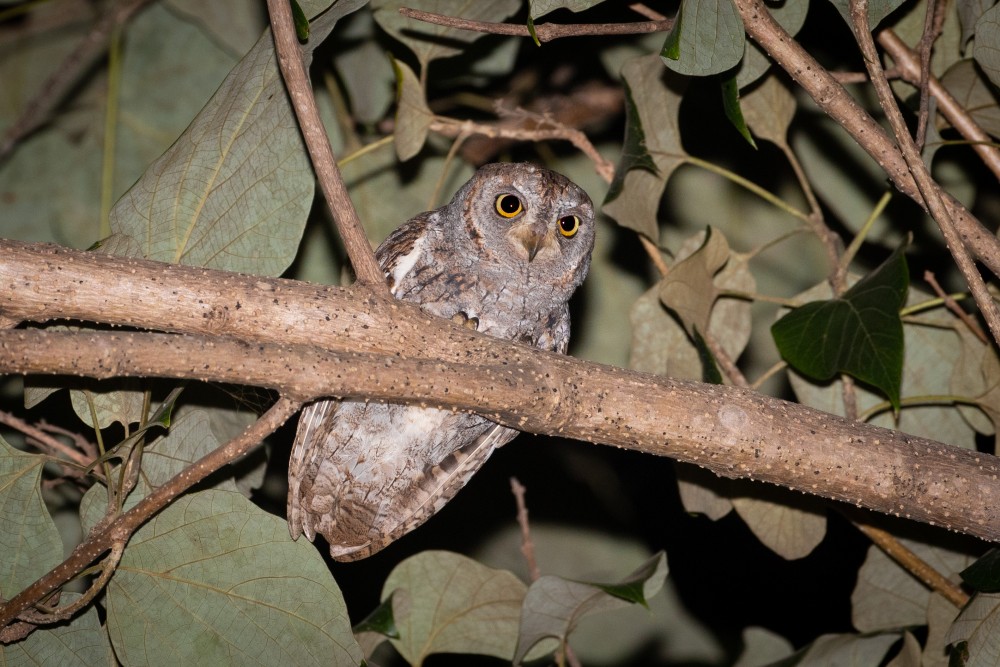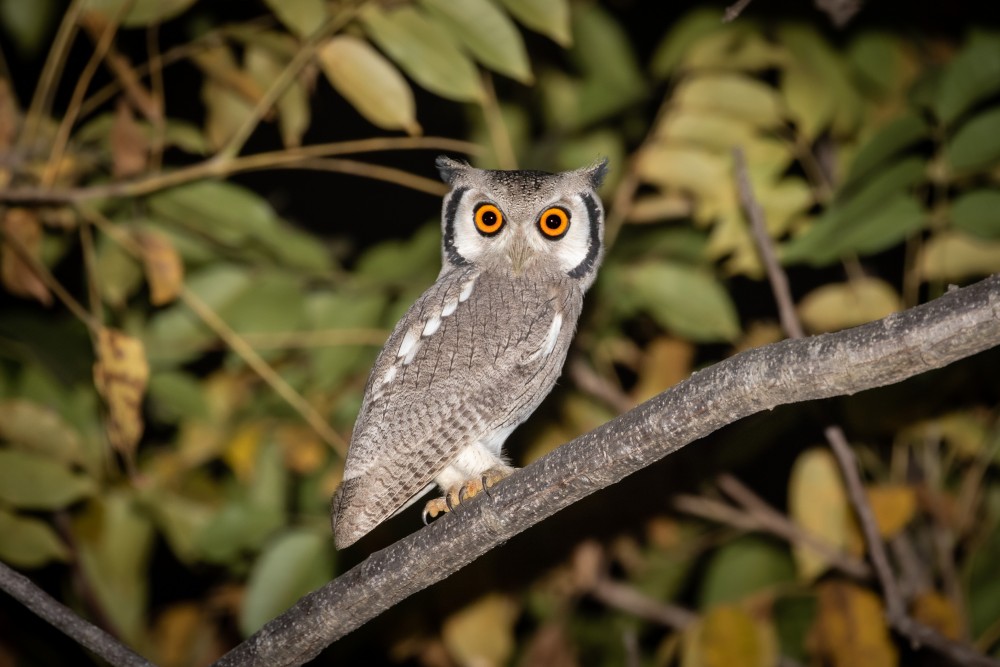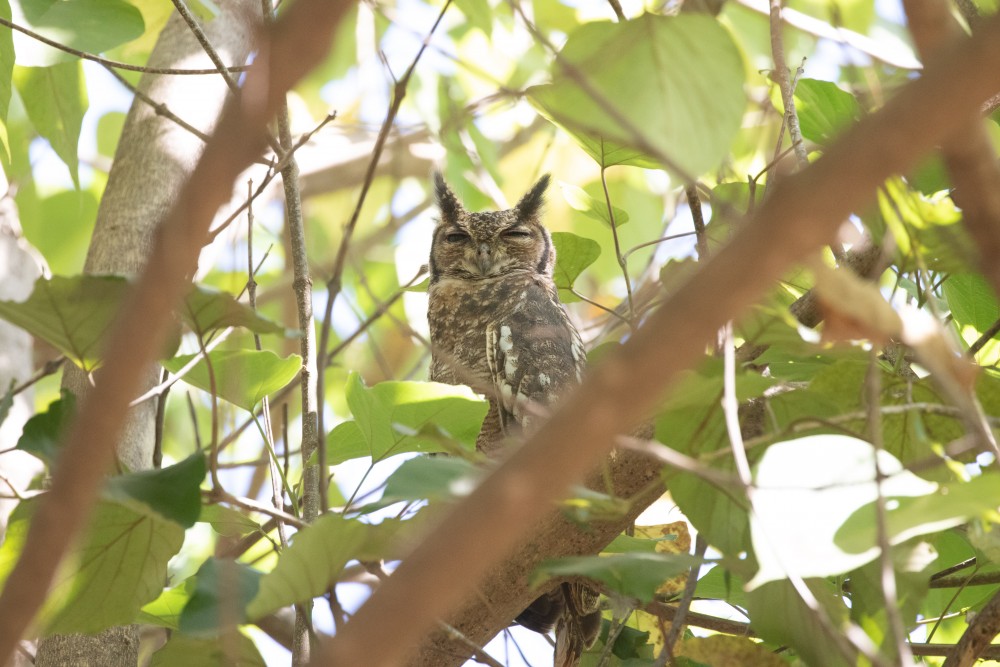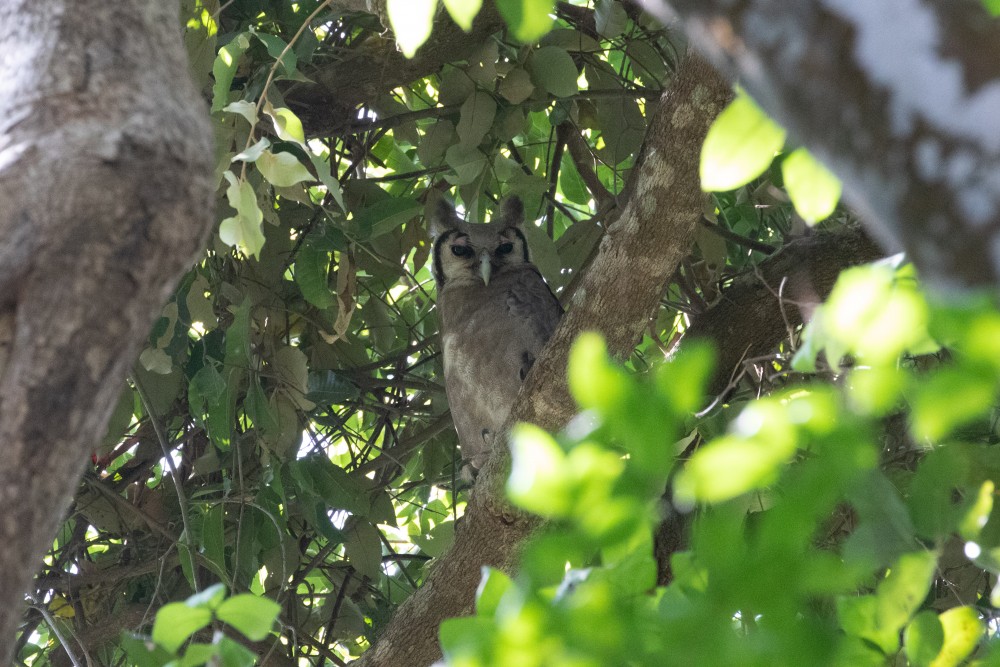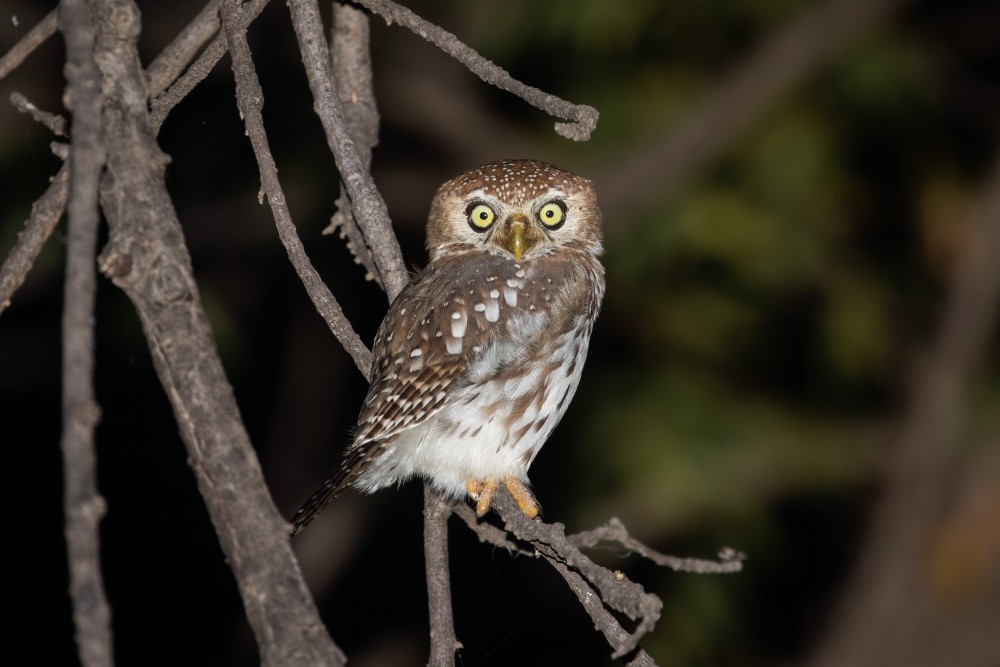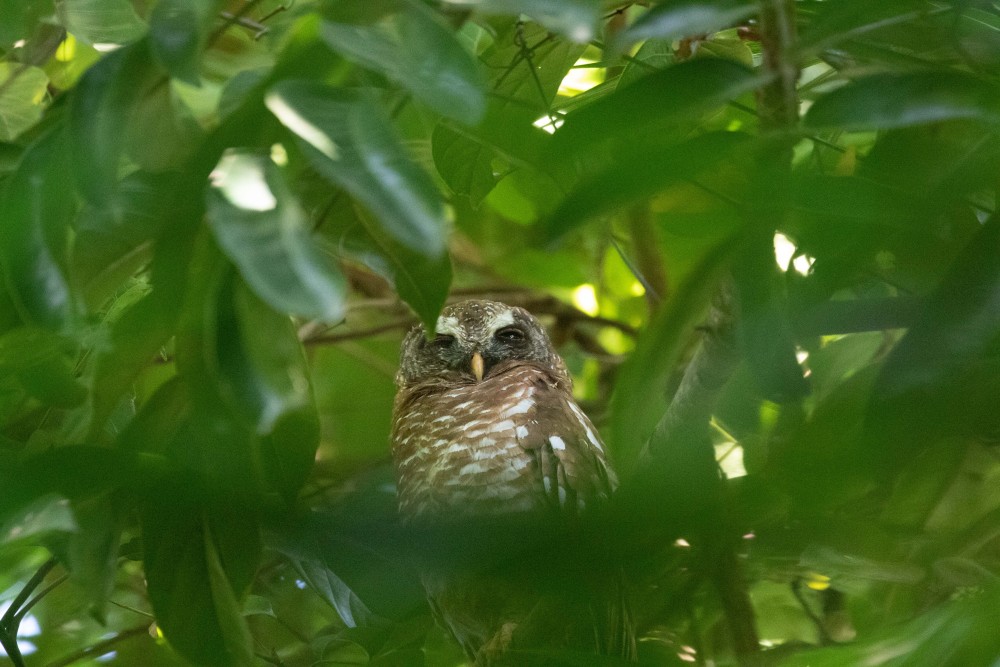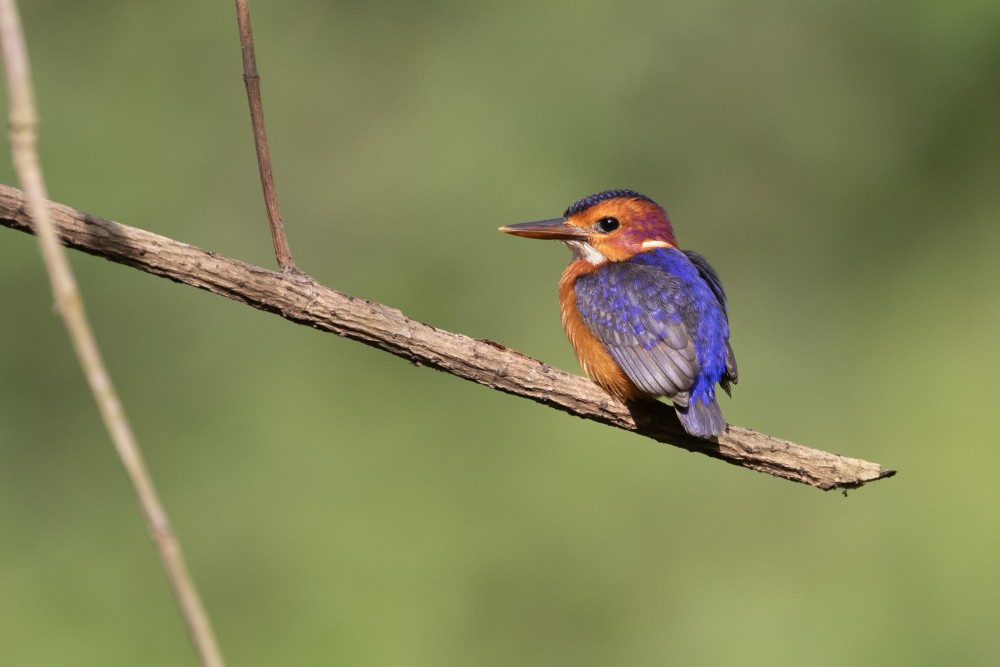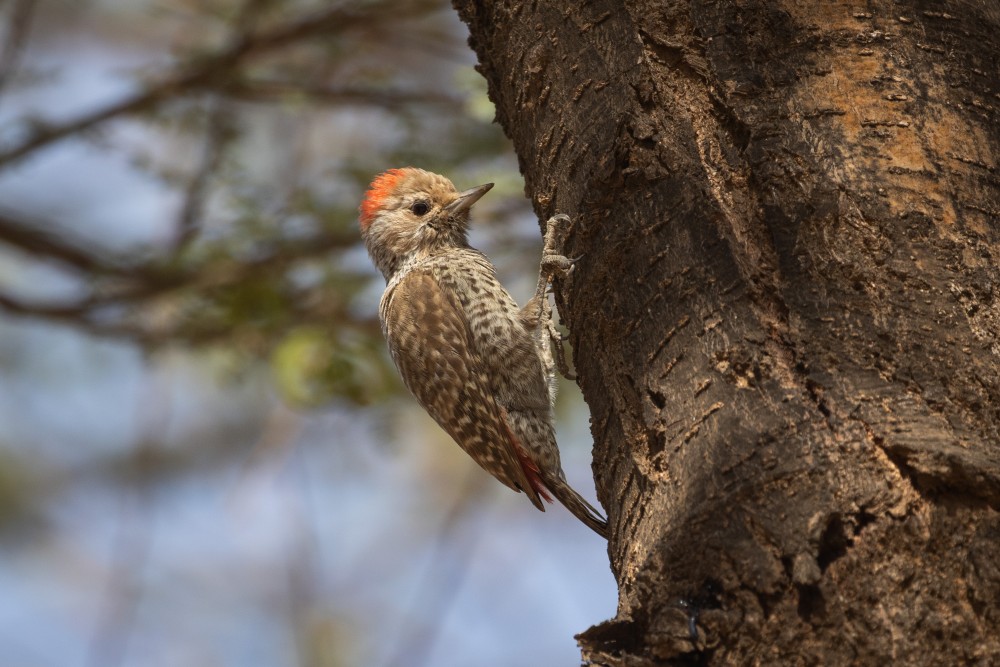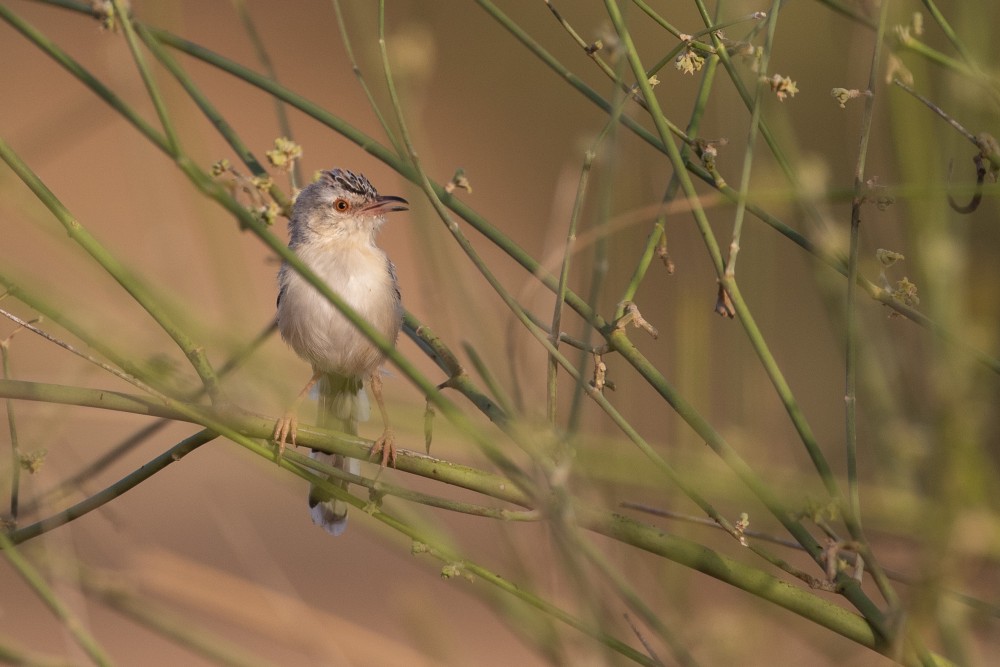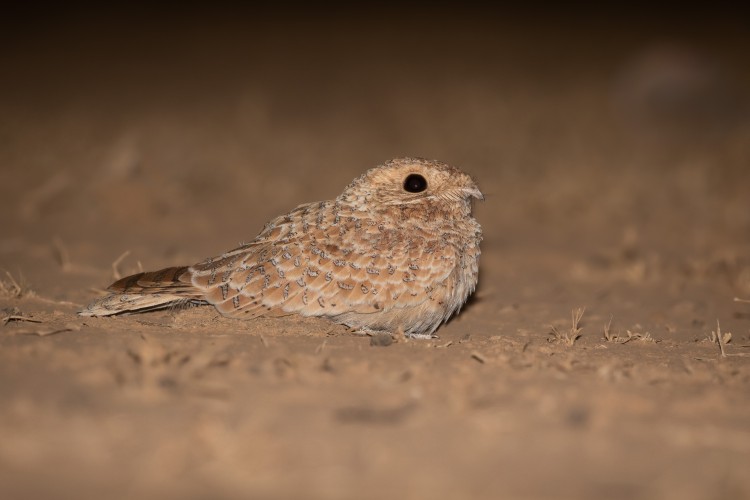
Senegal and Gambia
17 November 2019 – 12 December 2019
Birding in Senegal and Gambia offers a nice introduction to African birds as well as the opportunity to see some Sahelian and West African specialities. In addition, it is a great way to experiment the West African culture in these safe and really welcoming countries.
We spent more than three weeks in those two countries, travelling mainly by public transportation, and we could see most of our targets including Golden nightjar, Egyptian plover or Scissor-tailed kite. We didn't try to see the sought after Quail-plover due to the lack of up-to-date informations and the potential difficulties to reach possible sites without a private car.
We mainly organised the trip by ourselves except for 5 days in Gambia where we booked a guide to go upriver (2 nights in Tendaba and 2 nights in MacCarthy island). We chose the company Turaco Birding and our guide was Pa Jallow. Everything was well organised for a fair price and we really enjoyed our time with Pa Jallow and Aliou, his driver. I would highly recommend using the services of Turaco Birding for such a trip.
This report is deliberately short and details are given only about sites for which I couldn't find the informations I was hoping for while preparing the trip. For more informations do not hesitate to contact me on my mail (aubert.s2701@gmail.com).
Visited Sites
- Abuko Nature Reserve 19 November 2019, 20 November 2019
- Tanji Bird Reserve 21 November 2019
- Brufut Woods 21 November 2019
- Tujereng 22 November 2019
- Farasuto Forest 23 November 2019 – 25 November 2019
- Pirang Bonto Forest 24 November 2019, 25 November 2019
- Tendaba 25 November 2019 – 27 November 2019
- Maccarthy Island 27 November 2019 – 29 November 2019
- Kau-ur Wetland 27 November 2019, 29 November 2019
- Kunkilling Forest Park 28 November 2019
- Bansang Quarry 28 November 2019
- Ile de Kousmar 29 November 2019 – 01 December 2019
- Richard Toll 02 December 2019 – 04 December 2019
- Podor 04 December 2019 – 05 December 2019
- Oiseaux de Djoudj NP 07 December 2019 – 09 December 2019
- Somone area 09 December 2019 – 12 December 2019
General Travelling Information
Transport
We arrived at Dakar airport which is located next to the big city of Thies. From Thies it is easy to find a shared taxi going to the Gambia border in Karang. We had no problem crossing from one country to the other on both occasions but had to pay 50 euros to obtain our Gambian visa at the border. The process didn't look really official.
We mainly used shared taxis to travel between cities or villages and we didn't encounter too much difficulties. It is a rather cheap option and it is quite reliable even if it doesn't seem at first sight. The main downside of this travelling mode is definitely the lack of comfort but at leat it allows a more authentic experience. Speaking french was of course really useful while in Senegal and made this way of travelling easier. We also regularly used private taxis to reach more remote places. Private taxis are easy to find everywhere and are reasonably cheap for short rides.
Budget
We easily found basic accomodations (10-20 euros for a double room) in most of the places visited. Local restaurant are present everywhere and often prepare lunch or dinner for around 1 euro or less. It was for us a good way to spare a bit on our budget and accomodations targeting tourists often seemed overpiced. It is definitely possible to organise a birding trip for cheap in these countries even though most of the visiting birders seem to use the services of local guides or agencies to organise their whole trip.
Farasuto Forest
We slept two nights next to the forest in a small lodge which is still in building phase. We camped there with our own tent and the team from the lodge provided us with excellent food. The lodge will probably be finished in a few months and is being built by Modou Barry and his friends (he owns a travel agency called Tour Gambia). A more conventional accomodation called Sita Joyeh is located a bit further from the forest and seems to be a good place to stay. During our stay there we were always accompanied by Mustapha, a young birdguide from the village. He was of great company and accompanied us during our night walks.
The advantage to stay next to Farasuto was the proximity to Pirang forest (at walking distance) and most of all the possibility to do some night birding easily by foot. During night sessions we had some great sightings of Northern white-faced owl, Arabian scops owl and Standard-winged nightjar (the big quarry at 13.296710, -16.572528 is probably the best place to find it at night).
Farasuto forest offers the possibility to see several species difficult to see elsewhere in the country, like African wood-owl, Greyish eagle-owl (both species have a known roost place) or White-backed night-heron. Some year, the local guides also find roosting Standard-winged nightjar.
Pirang forest, situated approximatively 2km from Farasuto, allows good views of skulking species like White-spotted flufftail and Ahanta francolin, thanks to local guides. A roosting Verreaux's eagle-owl is also realiably seen in the forest.
Tendaba
We stayed at Tendaba camp which is a correct place. From there we had a great boat trip organised by the lodge. We explored the mangroves on the North bank and highlights included African blue flycatcher, African finfoot, White-backed night-heron and White-throated bee-eater.
Having heard about a potential nest site of Pel's fishing-owl being accessible in the mangroves, we tried our luck with an evening boat trip. We didn't see anything but it is worth asking the boatmen what are the latest informations about this species which is sometimes seen there.
The hill south of the camp offers some good birding (13.431268, -15.807473). There is a small hide with a drinking pool and around there we got our only views of the trip of several species like White-shouldered black tit, Brubru, Chestnut-crowned sparrow-weawer, Striped kingfisher or Greater honeyguide. It is also a known spot for Bronze-winged courser.
Maccarthy Island
The island is a nice place with some interesting birding close from the village. We stayed at Baobolong lodge which is a nice accomodation. From there we had some great birds in some semi-open habitat east of the village (13.533511, -14.743871). In the end of the afternoon, we saw our only Four-banded sandgrouses of the trip. Several birds were seen in a short amount of time, suggesting that it is a quite reliable site for this species. Two night walks in the same area allowed us to encounter four species of owls (Northern white-faced owl, Arabian scops owl, Pearl-spotted owl plus Verreaux's eagle-owl calling), several Long-tailed nightjar and a great surprise in the form of two Bronze-winged coursers.
From the lodge, we also took a boat trip to see Hippos and we actually saw one, as well as several crocodiles. The boat trip also allowed us to see African finfoot (1 female with 2 chicks), Swamp flycatcher or Hadada ibis.
Ile de Kousmar
We easily reached the village of Ndiaffate (14.090307, -16.165091) from Kaolack by taxi. We had a local contact (Pape Seydou, he can be contacted by whatsapp +221777515496) who arranged us an option to sleep in the village in one of his friends house where they also provided us with water and food. Boubacar, the villager who hosted us, also accompanied us on the island to see the kites coming on their roost. It is possible to camp on the island where there are good chances to see hyenas.
The main reason to go to Kousmar is of course the raptor roost which is an incredible experience. We also birded by foot the area situated between the village and the island where we found White-bellied and Savile's bustards. The acacia forest there was full of passerines with especially a great diversity of Palearctic migrants.
Richard Toll
The general area is good for Sahelian specialities and two sites situated really close to the city are worth visiting. The first (Piste des antennes, 16.471999, -15.634933) is an area with acacia forest where we easily found Little grey woodpecker and Sennar penduline-tit. Other interesting species seen there were Temminck's courser, Blue-naped mousebird, Vieillot's barbet or Black scrub-robin.
The second good area we visited is situated between the city and the airport stripe (16.447261, -15.662459). Here we easily saw several Cricket warbler and other species during the end of the afternoon, including several groups of Chestnut-bellied sandgrouse before dusk.
Suitable and less disturbed habitats for the typical Sahelian species seems to be easy to find further from Richard Toll which is a rather unpleasant city.
We also visited the area north of the sewage pond (16.479265, -15.732655). There we found the localised River prinia as well as Zebra waxbill and Winding cisticola. There is also a great diversity of waders with for instance Marsh sandpiper and Kittlitz's plover. The marsh area was unfortunately not visible and we could not find any rallids.
Podor
Podor is the lonely place we struggled a bit to reach with public transportation but with a bit of patience it is not a problem at all. Once there we arranged with a taxi at the garage to bring us to the Golden nightjar spot and then to pick us up a few hours later. We saw and heard several Golden nj after dusk on the big tracks east and west from the crossing (16.625194, -14.914445). The nightjars are easy to spot with a torch as they sit most of the time in open places. The place is also really good for Long-tailed nightjars with 10+ birds seen.
We didn't tried at dawn but it must be a good option to find where the nightjars roost during the day.
Oiseaux de Djoudj NP
Djoudj NP is an impressive place with a crazy number of water birds. Entrance fees and accomodations are however really overpriced. We stayed at the Campement Njagabaar which is rundown and far from what you would expect for the price.
We entered the park only on one day as we saw all our targets easily. We had booked a guide with a car in advance and it proved to be a good idea. The park is too big to be explored by foot and our guide, Vieux Ngom (he can be reached on whatsapp +221771188327), was an excellent birder and most of all a passionate birder. He found us some great birds like Egyptian nightjar and Allen's gallinule. Apart from the great number of birds, the park hosts some species difficult or impossible to see elsewhere in the region like Black-crowned crane or Arabian bustard (apparently only 4 individuals in the park, some of the last in western Africa ?).
Species List
-
 White-faced Whistling-Duck
Dendrocygna viduata
White-faced Whistling-Duck
Dendrocygna viduata
-
 Fulvous Whistling-Duck
Dendrocygna bicolor
details
sounds
Fulvous Whistling-Duck
Dendrocygna bicolor
details
sounds
-
Oiseaux de Djoudj NP
-
-
 Egyptian Goose
Alopochen aegyptiaca
Egyptian Goose
Alopochen aegyptiaca
-
 Spur-winged Goose
Plectropterus gambensis
Spur-winged Goose
Plectropterus gambensis
-
 African Pygmy-Goose
Nettapus auritus
details
sounds
African Pygmy-Goose
Nettapus auritus
details
sounds
-
Oiseaux de Djoudj NP
2 birds during boat tour
-
-
 Garganey
Spatula querquedula
Garganey
Spatula querquedula
-
 Northern Shoveler
Spatula clypeata
Northern Shoveler
Spatula clypeata
-
 Northern Pintail
Anas acuta
Northern Pintail
Anas acuta
-
 Green-winged Teal
Anas crecca
Green-winged Teal
Anas crecca
-
 Tufted Duck
Aythya fuligula
details
sounds
Tufted Duck
Aythya fuligula
details
sounds
-
Oiseaux de Djoudj NP
-
-
 Helmeted Guineafowl
Numida meleagris
details
sounds
Helmeted Guineafowl
Numida meleagris
details
sounds
-
Tendaba
-
enroute
-
-
 Stone Partridge
Ptilopachus petrosus
details
sounds
Stone Partridge
Ptilopachus petrosus
details
sounds
-
Farasuto Forest (heard only)
-
Tendaba (heard only)
-
-
 Common Quail
Coturnix coturnix
details
sounds
Common Quail
Coturnix coturnix
details
sounds
-
Tendaba
-
Oiseaux de Djoudj NP
-
-
 Ahanta Spurfowl
Pternistis ahantensis
details
sounds
Ahanta Spurfowl
Pternistis ahantensis
details
sounds
-
Pirang Bonto Forest
Flushed + heard several
-
-
 Double-spurred Spurfowl
Pternistis bicalcaratus
Double-spurred Spurfowl
Pternistis bicalcaratus
-
 Greater Flamingo
Phoenicopterus roseus
Greater Flamingo
Phoenicopterus roseus
-
 Lesser Flamingo
Phoeniconaias minor
details
sounds
Lesser Flamingo
Phoeniconaias minor
details
sounds
-
Oiseaux de Djoudj NP
-
-
 Little Grebe
Tachybaptus ruficollis
Little Grebe
Tachybaptus ruficollis
-
 Rock Pigeon (Feral Pigeon)
Columba livia (Feral Pigeon)
Rock Pigeon (Feral Pigeon)
Columba livia (Feral Pigeon)
-
 Speckled Pigeon
Columba guinea
Speckled Pigeon
Columba guinea
-
 Adamawa Turtle-Dove
Streptopelia hypopyrrha
details
sounds
Adamawa Turtle-Dove
Streptopelia hypopyrrha
details
sounds
-
 Mourning Collared-Dove
Streptopelia decipiens
Mourning Collared-Dove
Streptopelia decipiens
-
 Red-eyed Dove
Streptopelia semitorquata
Red-eyed Dove
Streptopelia semitorquata
-
 Vinaceous Dove
Streptopelia vinacea
Vinaceous Dove
Streptopelia vinacea
-
 Laughing Dove
Spilopelia senegalensis
Laughing Dove
Spilopelia senegalensis
-
 Black-billed Wood-Dove
Turtur abyssinicus
Black-billed Wood-Dove
Turtur abyssinicus
-
 Blue-spotted Wood-Dove
Turtur afer
Blue-spotted Wood-Dove
Turtur afer
-
 Namaqua Dove
Oena capensis
Namaqua Dove
Oena capensis
-
 Bruce's Green-Pigeon
Treron waalia
details
sounds
Bruce's Green-Pigeon
Treron waalia
details
sounds
-
Pirang Bonto Forest
-
-
 African Green-Pigeon
Treron calvus
details
sounds
African Green-Pigeon
Treron calvus
details
sounds
-
Pirang Bonto Forest
-
-
 Chestnut-bellied Sandgrouse
Pterocles exustus
details
sounds
Chestnut-bellied Sandgrouse
Pterocles exustus
details
sounds
-
Richard Toll
2019-12-03 ≥ 50 ind. Several groups gathering before dusk
-
-
 Four-banded Sandgrouse
Pterocles quadricinctus
details
sounds
Four-banded Sandgrouse
Pterocles quadricinctus
details
sounds
-
Maccarthy Island
2019-11-27 ≥ 5 ind. Several birds flushed before dusk, one seen well.
-
-
 Arabian Bustard
Ardeotis arabs
details
sounds
Arabian Bustard
Ardeotis arabs
details
sounds
-
Oiseaux de Djoudj NP
2019-12-08 1 ind.
-
-
 White-bellied Bustard
Eupodotis senegalensis
details
sounds
White-bellied Bustard
Eupodotis senegalensis
details
sounds
-
 Savile's Bustard
Lophotis savilei
details
sounds
Savile's Bustard
Lophotis savilei
details
sounds
-
Ile de Kousmar
2019-12-01 ≥ 5 ind. Several heard, 1 finally seen
-
-
 Guinea Turaco
Tauraco persa
details
sounds
Guinea Turaco
Tauraco persa
details
sounds
-
Abuko Nature Reserve
-
Pirang Bonto Forest
-
-
 Violet Turaco
Musophaga violacea
details
sounds
Violet Turaco
Musophaga violacea
details
sounds
-
Abuko Nature Reserve
-
Farasuto Forest
-
Pirang Bonto Forest
-
-
 Western Plantain-eater
Crinifer piscator
Western Plantain-eater
Crinifer piscator
-
 Senegal Coucal
Centropus senegalensis
Senegal Coucal
Centropus senegalensis
-
 Great Spotted Cuckoo
Clamator glandarius
details
sounds
Great Spotted Cuckoo
Clamator glandarius
details
sounds
-
Ile de Kousmar
-
Podor
-
-
 Levaillant's Cuckoo
Clamator levaillantii
details
sounds
Levaillant's Cuckoo
Clamator levaillantii
details
sounds
-
Farasuto Forest
-
-
 Klaas's Cuckoo
Chrysococcyx klaas
details
sounds
Klaas's Cuckoo
Chrysococcyx klaas
details
sounds
-
Abuko Nature Reserve
-
Brufut Woods
-
-
 Standard-winged Nightjar
Caprimulgus longipennis
details
sounds
Standard-winged Nightjar
Caprimulgus longipennis
details
sounds
-
 Egyptian Nightjar
Caprimulgus aegyptius
details
sounds
Egyptian Nightjar
Caprimulgus aegyptius
details
sounds
-
 Golden Nightjar
Caprimulgus eximius
details
sounds
Golden Nightjar
Caprimulgus eximius
details
sounds
-
 Long-tailed Nightjar
Caprimulgus climacurus
details
sounds
Long-tailed Nightjar
Caprimulgus climacurus
details
sounds
-
Brufut Woods
-
Podor
10+ birds at same site as Golden nj
-
Oiseaux de Djoudj NP
-
-
 Mottled Spinetail
Telacanthura ussheri
Mottled Spinetail
Telacanthura ussheri
-
 Little Swift
Apus affinis
Little Swift
Apus affinis
-
 African Palm Swift
Cypsiurus parvus
African Palm Swift
Cypsiurus parvus
-
 White-spotted Flufftail
Sarothrura pulchra
details
sounds
White-spotted Flufftail
Sarothrura pulchra
details
sounds
-
 Eurasian Moorhen
Gallinula chloropus
Eurasian Moorhen
Gallinula chloropus
-
 Allen's Gallinule
Porphyrio alleni
details
sounds
Allen's Gallinule
Porphyrio alleni
details
sounds
-
Oiseaux de Djoudj NP
2019-12-08 1 ind.
-
-
 African Swamphen
Porphyrio madagascariensis
details
sounds
African Swamphen
Porphyrio madagascariensis
details
sounds
-
Oiseaux de Djoudj NP
-
-
 Black Crake
Zapornia flavirostra
details
sounds
Black Crake
Zapornia flavirostra
details
sounds
-
Oiseaux de Djoudj NP
-
-
 African Finfoot
Podica senegalensis
details
sounds
African Finfoot
Podica senegalensis
details
sounds
-
Maccarthy Island
Boat trip, 1 female with 2 chicks
-
 Black Crowned-Crane
Balearica pavonina
details
sounds
Black Crowned-Crane
Balearica pavonina
details
sounds
-
Maccarthy Island
-
Oiseaux de Djoudj NP
-
-
 Senegal Thick-knee
Burhinus senegalensis
Senegal Thick-knee
Burhinus senegalensis
-
 Egyptian Plover
Pluvianus aegyptius
details
sounds
Egyptian Plover
Pluvianus aegyptius
details
sounds
-
 Black-winged Stilt
Himantopus himantopus
Black-winged Stilt
Himantopus himantopus
-
 Pied Avocet
Recurvirostra avosetta
Pied Avocet
Recurvirostra avosetta
-
 Black-bellied Plover
Pluvialis squatarola
Black-bellied Plover
Pluvialis squatarola
-
 Common Ringed Plover
Charadrius hiaticula
Common Ringed Plover
Charadrius hiaticula
-
 Little Ringed Plover
Charadrius dubius
Little Ringed Plover
Charadrius dubius
-
 Spur-winged Lapwing
Vanellus spinosus
Spur-winged Lapwing
Vanellus spinosus
-
 Black-headed Lapwing
Vanellus tectus
Black-headed Lapwing
Vanellus tectus
-
 Wattled Lapwing
Vanellus senegallus
Wattled Lapwing
Vanellus senegallus
-
 Kittlitz's Plover
Anarhynchus pecuarius
details
sounds
Kittlitz's Plover
Anarhynchus pecuarius
details
sounds
-
Richard Toll
-
Podor
-
Oiseaux de Djoudj NP
-
-
 Kentish Plover
Anarhynchus alexandrinus
Kentish Plover
Anarhynchus alexandrinus
-
 Greater Painted-Snipe
Rostratula benghalensis
details
sounds
Greater Painted-Snipe
Rostratula benghalensis
details
sounds
-
Tendaba
2019-11-26 ≥ 4 ind. -
Oiseaux de Djoudj NP
-
-
 African Jacana
Actophilornis africanus
African Jacana
Actophilornis africanus
-
 Whimbrel
Numenius phaeopus
Whimbrel
Numenius phaeopus
-
 Eurasian Curlew
Numenius arquata
Eurasian Curlew
Numenius arquata
-
 Bar-tailed Godwit
Limosa lapponica
Bar-tailed Godwit
Limosa lapponica
-
 Black-tailed Godwit
Limosa limosa
Black-tailed Godwit
Limosa limosa
-
 Common Sandpiper
Actitis hypoleucos
Common Sandpiper
Actitis hypoleucos
-
 Green Sandpiper
Tringa ochropus
Green Sandpiper
Tringa ochropus
-
 Marsh Sandpiper
Tringa stagnatilis
details
sounds
Marsh Sandpiper
Tringa stagnatilis
details
sounds
-
Oiseaux de Djoudj NP
-
-
 Wood Sandpiper
Tringa glareola
Wood Sandpiper
Tringa glareola
-
 Common Redshank
Tringa totanus
Common Redshank
Tringa totanus
-
 Common Greenshank
Tringa nebularia
Common Greenshank
Tringa nebularia
-
 Ruddy Turnstone
Arenaria interpres
Ruddy Turnstone
Arenaria interpres
-
 Ruff
Calidris pugnax
Ruff
Calidris pugnax
-
 Curlew Sandpiper
Calidris ferruginea
Curlew Sandpiper
Calidris ferruginea
-
 Dunlin
Calidris alpina
Dunlin
Calidris alpina
-
 Little Stint
Calidris minuta
Little Stint
Calidris minuta
-
 Bronze-winged Courser
Rhinoptilus chalcopterus
details
sounds
Bronze-winged Courser
Rhinoptilus chalcopterus
details
sounds
-
 Temminck's Courser
Cursorius temminckii
details
sounds
Temminck's Courser
Cursorius temminckii
details
sounds
-
 Slender-billed Gull
Chroicocephalus genei
Slender-billed Gull
Chroicocephalus genei
-
 Black-headed Gull
Chroicocephalus ridibundus
Black-headed Gull
Chroicocephalus ridibundus
-
 Gray-hooded Gull
Chroicocephalus cirrocephalus
Gray-hooded Gull
Chroicocephalus cirrocephalus
-
 Lesser Black-backed Gull
Larus fuscus
Lesser Black-backed Gull
Larus fuscus
-
 Little Tern
Sternula albifrons
Little Tern
Sternula albifrons
-
 Gull-billed Tern
Gelochelidon nilotica
Gull-billed Tern
Gelochelidon nilotica
-
 Caspian Tern
Hydroprogne caspia
Caspian Tern
Hydroprogne caspia
-
 Whiskered Tern
Chlidonias hybrida
Whiskered Tern
Chlidonias hybrida
-
 Black Tern
Chlidonias niger
Black Tern
Chlidonias niger
-
 Sandwich Tern
Thalasseus sandvicensis
Sandwich Tern
Thalasseus sandvicensis
-
 Lesser Crested Tern
Thalasseus bengalensis
details
sounds
Lesser Crested Tern
Thalasseus bengalensis
details
sounds
-
Tanji Bird Reserve
Several in font of the fishing village
-
-
 West African Crested Tern
Thalasseus albididorsalis
details
sounds
West African Crested Tern
Thalasseus albididorsalis
details
sounds
-
Tanji Bird Reserve
Several in font of the fishing village
-
-
 Black Stork
Ciconia nigra
details
sounds
Black Stork
Ciconia nigra
details
sounds
-
Ile de Kousmar
-
Oiseaux de Djoudj NP
-
-
 African Woolly-necked Stork
Ciconia microscelis
details
sounds
African Woolly-necked Stork
Ciconia microscelis
details
sounds
-
Tendaba
-
Kau-ur Wetland
-
-
 Marabou Stork
Leptoptilos crumenifer
details
sounds
Marabou Stork
Leptoptilos crumenifer
details
sounds
-
Maccarthy Island
-
Kunkilling Forest Park
-
-
 Yellow-billed Stork
Mycteria ibis
details
sounds
Yellow-billed Stork
Mycteria ibis
details
sounds
-
Farasuto Forest
-
Oiseaux de Djoudj NP
-
-
 African Darter
Anhinga rufa
African Darter
Anhinga rufa
-
 Long-tailed Cormorant
Microcarbo africanus
Long-tailed Cormorant
Microcarbo africanus
-
 Great Cormorant
Phalacrocorax carbo
Great Cormorant
Phalacrocorax carbo
-
 Great White Pelican
Pelecanus onocrotalus
Great White Pelican
Pelecanus onocrotalus
-
 Pink-backed Pelican
Pelecanus rufescens
Pink-backed Pelican
Pelecanus rufescens
-
 Hamerkop
Scopus umbretta
Hamerkop
Scopus umbretta
-
 Black-crowned Night Heron
Nycticorax nycticorax
Black-crowned Night Heron
Nycticorax nycticorax
-
 Black Heron
Egretta ardesiaca
details
sounds
Black Heron
Egretta ardesiaca
details
sounds
-
Farasuto Forest
-
Oiseaux de Djoudj NP
-
-
 Little Egret
Egretta garzetta
Little Egret
Egretta garzetta
-
 Western Reef-Heron
Egretta gularis
Western Reef-Heron
Egretta gularis
-
 White-backed Night Heron
Calherodius leuconotus
details
sounds
White-backed Night Heron
Calherodius leuconotus
details
sounds
-
Farasuto Forest
2019-11-24 1 ind. -
Tendaba
Boat trip
-
-
 Striated Heron
Butorides striata
Striated Heron
Butorides striata
-
 Squacco Heron
Ardeola ralloides
Squacco Heron
Ardeola ralloides
-
 Western Cattle Egret
Bubulcus ibis
Western Cattle Egret
Bubulcus ibis
-
 Great Egret
Ardea alba
Great Egret
Ardea alba
-
 Yellow-billed Egret
Ardea brachyrhyncha
Yellow-billed Egret
Ardea brachyrhyncha
-
 Gray Heron
Ardea cinerea
Gray Heron
Ardea cinerea
-
 Purple Heron
Ardea purpurea
Purple Heron
Ardea purpurea
-
 Black-headed Heron
Ardea melanocephala
Black-headed Heron
Ardea melanocephala
-
 Goliath Heron
Ardea goliath
details
sounds
Goliath Heron
Ardea goliath
details
sounds
-
Farasuto Forest
1 bird in flight
-
-
 Glossy Ibis
Plegadis falcinellus
Glossy Ibis
Plegadis falcinellus
-
 African Sacred Ibis
Threskiornis aethiopicus
African Sacred Ibis
Threskiornis aethiopicus
-
 Hadada Ibis
Bostrychia hagedash
details
sounds
Hadada Ibis
Bostrychia hagedash
details
sounds
-
Maccarthy Island
-
-
 Eurasian Spoonbill
Platalea leucorodia
Eurasian Spoonbill
Platalea leucorodia
-
 African Spoonbill
Platalea alba
details
sounds
African Spoonbill
Platalea alba
details
sounds
-
Oiseaux de Djoudj NP
1 bird during boat trip
-
-
 Osprey
Pandion haliaetus
Osprey
Pandion haliaetus
-
 Black-winged Kite
Elanus caeruleus
Black-winged Kite
Elanus caeruleus
-
 Scissor-tailed Kite
Chelictinia riocourii
details
sounds
Scissor-tailed Kite
Chelictinia riocourii
details
sounds
-
 African Harrier-Hawk
Polyboroides typus
African Harrier-Hawk
Polyboroides typus
-
 Palm-nut Vulture
Gypohierax angolensis
Palm-nut Vulture
Gypohierax angolensis
-
 Lappet-faced Vulture
Torgos tracheliotos
details
sounds
Lappet-faced Vulture
Torgos tracheliotos
details
sounds
-
enroute
2 birds seen from the road near K??b??mer
-
-
 Hooded Vulture
Necrosyrtes monachus
Hooded Vulture
Necrosyrtes monachus
-
 White-backed Vulture
Gyps africanus
White-backed Vulture
Gyps africanus
-
 Rüppell's Griffon
Gyps rueppelli
details
sounds
Rüppell's Griffon
Gyps rueppelli
details
sounds
-
enroute
Several near K??b??mer
-
-
 Bateleur
Terathopius ecaudatus
details
sounds
Bateleur
Terathopius ecaudatus
details
sounds
-
 Short-toed Snake-Eagle
Circaetus gallicus
Short-toed Snake-Eagle
Circaetus gallicus
-
 Beaudouin's Snake-Eagle
Circaetus beaudouini
Beaudouin's Snake-Eagle
Circaetus beaudouini
-
 Brown Snake-Eagle
Circaetus cinereus
Brown Snake-Eagle
Circaetus cinereus
-
 Banded Snake-Eagle
Circaetus cinerascens
details
sounds
Banded Snake-Eagle
Circaetus cinerascens
details
sounds
-
Tendaba
-
-
 Long-crested Eagle
Lophaetus occipitalis
details
sounds
Long-crested Eagle
Lophaetus occipitalis
details
sounds
-
Maccarthy Island
-
-
 Wahlberg's Eagle
Hieraaetus wahlbergi
Wahlberg's Eagle
Hieraaetus wahlbergi
-
 Bonelli's Eagle
Aquila fasciata
details
sounds
Bonelli's Eagle
Aquila fasciata
details
sounds
-
Oiseaux de Djoudj NP
-
-
 African Hawk-Eagle
Aquila spilogaster
African Hawk-Eagle
Aquila spilogaster
-
 Lizard Buzzard
Kaupifalco monogrammicus
Lizard Buzzard
Kaupifalco monogrammicus
-
 Dark Chanting-Goshawk
Melierax metabates
Dark Chanting-Goshawk
Melierax metabates
-
 Grasshopper Buzzard
Butastur rufipennis
Grasshopper Buzzard
Butastur rufipennis
-
 Western Marsh Harrier
Circus aeruginosus
Western Marsh Harrier
Circus aeruginosus
-
 Montagu's Harrier
Circus pygargus
Montagu's Harrier
Circus pygargus
-
 African Goshawk
Accipiter tachiro
details
sounds
African Goshawk
Accipiter tachiro
details
sounds
-
Pirang Bonto Forest
-
-
 Shikra
Accipiter badius
Shikra
Accipiter badius
-
 Black Kite
Milvus migrans
Black Kite
Milvus migrans
-
 African Fish-Eagle
Icthyophaga vocifer
details
sounds
African Fish-Eagle
Icthyophaga vocifer
details
sounds
-
Maccarthy Island
-
Oiseaux de Djoudj NP
-
-
 Barn Owl
Tyto alba
details
sounds
Barn Owl
Tyto alba
details
sounds
-
Oiseaux de Djoudj NP
-
-
 African Scops-Owl
Otus senegalensis
details
sounds
African Scops-Owl
Otus senegalensis
details
sounds
-
Maccarthy Island
-
 Northern White-faced Owl
Ptilopsis leucotis
details
sounds
Northern White-faced Owl
Ptilopsis leucotis
details
sounds
-
Brufut Woods
Roosting
-
Farasuto Forest
At night; possibly 2 pairs, one in front of the forest entrance and one at the west end of the forest. Vocal.
-
-
 Grayish Eagle-Owl
Bubo cinerascens
details
sounds
Grayish Eagle-Owl
Bubo cinerascens
details
sounds
-
 Verreaux's Eagle-Owl
Ketupa lactea
details
sounds
Verreaux's Eagle-Owl
Ketupa lactea
details
sounds
-
Maccarthy Island (heard only)
-
 Pearl-spotted Owlet
Glaucidium perlatum
details
sounds
Pearl-spotted Owlet
Glaucidium perlatum
details
sounds
-
 African Wood-Owl
Strix woodfordii
details
sounds
African Wood-Owl
Strix woodfordii
details
sounds
-
 Blue-naped Mousebird
Urocolius macrourus
details
sounds
Blue-naped Mousebird
Urocolius macrourus
details
sounds
-
Richard Toll
-
-
 Eurasian Hoopoe
Upupa epops
Eurasian Hoopoe
Upupa epops
-
 Green Woodhoopoe
Phoeniculus purpureus
Green Woodhoopoe
Phoeniculus purpureus
-
 Black Scimitarbill
Rhinopomastus aterrimus
details
sounds
Black Scimitarbill
Rhinopomastus aterrimus
details
sounds
-
Tendaba
-
-
 African Gray Hornbill
Lophoceros nasutus
African Gray Hornbill
Lophoceros nasutus
-
 Western Red-billed Hornbill
Tockus kempi
Western Red-billed Hornbill
Tockus kempi
-
 Malachite Kingfisher
Corythornis cristatus
Malachite Kingfisher
Corythornis cristatus
-
 African Pygmy Kingfisher
Ispidina picta
details
sounds
African Pygmy Kingfisher
Ispidina picta
details
sounds
-
 Gray-headed Kingfisher
Halcyon leucocephala
details
sounds
Gray-headed Kingfisher
Halcyon leucocephala
details
sounds
-
Farasuto Forest
-
Tendaba
-
-
 Woodland Kingfisher
Halcyon senegalensis
Woodland Kingfisher
Halcyon senegalensis
-
 Blue-breasted Kingfisher
Halcyon malimbica
Blue-breasted Kingfisher
Halcyon malimbica
-
 Striped Kingfisher
Halcyon chelicuti
details
sounds
Striped Kingfisher
Halcyon chelicuti
details
sounds
-
Tendaba
2019-11-26 1 ind.
-
-
 Giant Kingfisher
Megaceryle maxima
details
sounds
Giant Kingfisher
Megaceryle maxima
details
sounds
-
Farasuto Forest
-
-
 Pied Kingfisher
Ceryle rudis
Pied Kingfisher
Ceryle rudis
-
 Red-throated Bee-eater
Merops bulocki
details
sounds
Red-throated Bee-eater
Merops bulocki
details
sounds
-
Maccarthy Island
-
Bansang Quarry
-
-
 Little Bee-eater
Merops pusillus
Little Bee-eater
Merops pusillus
-
 Swallow-tailed Bee-eater
Merops hirundineus
details
sounds
Swallow-tailed Bee-eater
Merops hirundineus
details
sounds
-
Abuko Nature Reserve
-
Brufut Woods
-
-
 White-throated Bee-eater
Merops albicollis
details
sounds
White-throated Bee-eater
Merops albicollis
details
sounds
-
Tendaba
Easy to see during boat trip
-
-
 African Green Bee-eater
Merops viridissimus
African Green Bee-eater
Merops viridissimus
-
 Blue-cheeked Bee-eater
Merops persicus
Blue-cheeked Bee-eater
Merops persicus
-
 European Bee-eater
Merops apiaster
European Bee-eater
Merops apiaster
-
 Abyssinian Roller
Coracias abyssinicus
Abyssinian Roller
Coracias abyssinicus
-
 Rufous-crowned Roller
Coracias naevius
Rufous-crowned Roller
Coracias naevius
-
 Blue-bellied Roller
Coracias cyanogaster
Blue-bellied Roller
Coracias cyanogaster
-
 Broad-billed Roller
Eurystomus glaucurus
details
sounds
Broad-billed Roller
Eurystomus glaucurus
details
sounds
-
Abuko Nature Reserve
-
Farasuto Forest
-
Maccarthy Island
-
-
 Yellow-fronted Tinkerbird
Pogoniulus chrysoconus
Yellow-fronted Tinkerbird
Pogoniulus chrysoconus
-
 Vieillot's Barbet
Lybius vieilloti
details
sounds
Vieillot's Barbet
Lybius vieilloti
details
sounds
-
Tendaba
-
Ile de Kousmar
-
Richard Toll
-
-
 Bearded Barbet
Pogonornis dubius
Bearded Barbet
Pogonornis dubius
-
 Spotted Honeyguide
Indicator maculatus
details
sounds
Spotted Honeyguide
Indicator maculatus
details
sounds
-
Pirang Bonto Forest
-
-
 Greater Honeyguide
Indicator indicator
details
sounds
Greater Honeyguide
Indicator indicator
details
sounds
-
Tendaba
2019-11-26 1 ind.
-
-
 Eurasian Wryneck
Jynx torquilla
Eurasian Wryneck
Jynx torquilla
-
 Little Gray Woodpecker
Dendropicos elachus
details
sounds
Little Gray Woodpecker
Dendropicos elachus
details
sounds
-
 Cardinal Woodpecker
Dendropicos fuscescens
details
sounds
Cardinal Woodpecker
Dendropicos fuscescens
details
sounds
-
Farasuto Forest
-
-
 African Gray Woodpecker
Dendropicos goertae
African Gray Woodpecker
Dendropicos goertae
-
 Fine-spotted Woodpecker
Campethera punctuligera
Fine-spotted Woodpecker
Campethera punctuligera
-
 Lesser Kestrel
Falco naumanni
details
sounds
Lesser Kestrel
Falco naumanni
details
sounds
-
Ile de Kousmar
Several hundreds
-
-
 Eurasian Kestrel
Falco tinnunculus
Eurasian Kestrel
Falco tinnunculus
-
 Gray Kestrel
Falco ardosiaceus
Gray Kestrel
Falco ardosiaceus
-
 Red-necked Falcon
Falco chicquera
details
sounds
Red-necked Falcon
Falco chicquera
details
sounds
-
Brufut Woods
-
enroute
-
-
 Lanner Falcon
Falco biarmicus
Lanner Falcon
Falco biarmicus
-
 Rose-ringed Parakeet
Psittacula krameri
Rose-ringed Parakeet
Psittacula krameri
-
 Brown-necked Parrot
Poicephalus fuscicollis
details
sounds
Brown-necked Parrot
Poicephalus fuscicollis
details
sounds
-
Pirang Bonto Forest
-
-
 Senegal Parrot
Poicephalus senegalus
Senegal Parrot
Poicephalus senegalus
-
 Ochre-lored Flatbill
Tolmomyias flaviventris
details
sounds
Ochre-lored Flatbill
Tolmomyias flaviventris
details
sounds
-
Abuko Nature Reserve
-
Pirang Bonto Forest
-
-
 African Golden Oriole
Oriolus auratus
details
sounds
African Golden Oriole
Oriolus auratus
details
sounds
-
Tujereng
-
Farasuto Forest
-
-
 Brown-throated Wattle-eye
Platysteira cyanea
Brown-throated Wattle-eye
Platysteira cyanea
-
 Brubru
Nilaus afer
details
sounds
Brubru
Nilaus afer
details
sounds
-
Tendaba
2019-11-26 1 ind.
-
-
 Northern Puffback
Dryoscopus gambensis
details
sounds
Northern Puffback
Dryoscopus gambensis
details
sounds
-
Abuko Nature Reserve
-
Farasuto Forest
-
Pirang Bonto Forest
-
Tendaba
-
-
 Black-crowned Tchagra
Tchagra senegalus
Black-crowned Tchagra
Tchagra senegalus
-
 Yellow-crowned Gonolek
Laniarius barbarus
Yellow-crowned Gonolek
Laniarius barbarus
-
 Gray-headed Bushshrike
Malaconotus blanchoti
details
sounds
Gray-headed Bushshrike
Malaconotus blanchoti
details
sounds
-
Maccarthy Island (heard only)
-
-
 Fork-tailed Drongo
Dicrurus adsimilis
Fork-tailed Drongo
Dicrurus adsimilis
-
 Black-headed Paradise-Flycatcher
Terpsiphone rufiventer
Black-headed Paradise-Flycatcher
Terpsiphone rufiventer
-
 African Paradise-Flycatcher
Terpsiphone viridis
details
sounds
African Paradise-Flycatcher
Terpsiphone viridis
details
sounds
-
Abuko Nature Reserve
-
Farasuto Forest
-
-
 Great Gray Shrike
Lanius excubitor
Great Gray Shrike
Lanius excubitor
-
 Yellow-billed Shrike
Lanius corvinus
Yellow-billed Shrike
Lanius corvinus
-
 Woodchat Shrike
Lanius senator
Woodchat Shrike
Lanius senator
-
 Piapiac
Ptilostomus afer
details
sounds
Piapiac
Ptilostomus afer
details
sounds
-
Bansang Quarry
-
-
 Pied Crow
Corvus albus
Pied Crow
Corvus albus
-
 African Blue Flycatcher
Elminia longicauda
details
sounds
African Blue Flycatcher
Elminia longicauda
details
sounds
-
Tendaba
During boat trip
-
-
 White-shouldered Black-Tit
Melaniparus guineensis
details
sounds
White-shouldered Black-Tit
Melaniparus guineensis
details
sounds
-
Tendaba
2019-11-26 2 ind.
-
-
 Sennar Penduline-Tit
Anthoscopus punctifrons
details
sounds
Sennar Penduline-Tit
Anthoscopus punctifrons
details
sounds
-
Richard Toll
2019-12-03 1 ind.
-
-
 Chestnut-backed Sparrow-Lark
Eremopterix leucotis
details
sounds
Chestnut-backed Sparrow-Lark
Eremopterix leucotis
details
sounds
-
Bansang Quarry
-
Oiseaux de Djoudj NP
-
enroute
-
-
 Black-crowned Sparrow-Lark
Eremopterix nigriceps
details
sounds
Black-crowned Sparrow-Lark
Eremopterix nigriceps
details
sounds
-
Richard Toll
-
Oiseaux de Djoudj NP
-
-
 Crested Lark
Galerida cristata
Crested Lark
Galerida cristata
-
 Green Crombec
Sylvietta virens
details
sounds
Green Crombec
Sylvietta virens
details
sounds
-
Pirang Bonto Forest
-
-
 Northern Crombec
Sylvietta brachyura
Northern Crombec
Sylvietta brachyura
-
 Yellow-bellied Eremomela
Eremomela icteropygialis
details
sounds
Yellow-bellied Eremomela
Eremomela icteropygialis
details
sounds
-
Richard Toll
-
-
 Senegal Eremomela
Eremomela pusilla
Senegal Eremomela
Eremomela pusilla
-
 Green-backed Camaroptera
Camaroptera brachyura
Green-backed Camaroptera
Camaroptera brachyura
-
 Cricket Longtail
Spiloptila clamans
details
sounds
Cricket Longtail
Spiloptila clamans
details
sounds
-
 Yellow-breasted Apalis
Apalis flavida
details
sounds
Yellow-breasted Apalis
Apalis flavida
details
sounds
-
Abuko Nature Reserve
-
Farasuto Forest
-
Pirang Bonto Forest
-
-
 Tawny-flanked Prinia
Prinia subflava
Tawny-flanked Prinia
Prinia subflava
-
 River Prinia
Prinia fluviatilis
details
sounds
River Prinia
Prinia fluviatilis
details
sounds
-
Richard Toll
2019-12-04 ≥ 2 ind. -
Oiseaux de Djoudj NP
-
-
 Oriole Warbler
Hypergerus atriceps
details
sounds
Oriole Warbler
Hypergerus atriceps
details
sounds
-
Brufut Woods (heard only)
-
Farasuto Forest (heard only)
-
Maccarthy Island (heard only)
-
-
 Singing Cisticola
Cisticola cantans
details
sounds
Singing Cisticola
Cisticola cantans
details
sounds
-
Tujereng
-
Farasuto Forest
-
-
 Winding Cisticola
Cisticola marginatus
details
sounds
Winding Cisticola
Cisticola marginatus
details
sounds
-
Richard Toll
-
-
 Zitting Cisticola
Cisticola juncidis
Zitting Cisticola
Cisticola juncidis
-
 Eastern Olivaceous Warbler
Iduna pallida
Eastern Olivaceous Warbler
Iduna pallida
-
 Melodious Warbler
Hippolais polyglotta
Melodious Warbler
Hippolais polyglotta
-
 Sedge Warbler
Acrocephalus schoenobaenus
Sedge Warbler
Acrocephalus schoenobaenus
-
 Common Reed Warbler
Acrocephalus scirpaceus
Common Reed Warbler
Acrocephalus scirpaceus
-
 Fanti Sawwing
Psalidoprocne obscura
details
sounds
Fanti Sawwing
Psalidoprocne obscura
details
sounds
-
Abuko Nature Reserve
-
Brufut Woods
-
-
 Bank Swallow
Riparia riparia
Bank Swallow
Riparia riparia
-
 Pied-winged Swallow
Hirundo leucosoma
details
sounds
Pied-winged Swallow
Hirundo leucosoma
details
sounds
-
Abuko Nature Reserve
-
Tujereng
-
-
 Red-chested Swallow
Hirundo lucida
Red-chested Swallow
Hirundo lucida
-
 Wire-tailed Swallow
Hirundo smithii
Wire-tailed Swallow
Hirundo smithii
-
 Western House-Martin
Delichon urbicum
Western House-Martin
Delichon urbicum
-
 Red-rumped Swallow
Cecropis daurica
Red-rumped Swallow
Cecropis daurica
-
 Mosque Swallow
Cecropis senegalensis
details
sounds
Mosque Swallow
Cecropis senegalensis
details
sounds
-
Tendaba
-
-
 Yellow-throated Greenbul
Atimastillas flavicollis
Yellow-throated Greenbul
Atimastillas flavicollis
-
 Little Greenbul
Eurillas virens
Little Greenbul
Eurillas virens
-
 Common Bulbul
Pycnonotus barbatus
Common Bulbul
Pycnonotus barbatus
-
 Western Bonelli's Warbler
Phylloscopus bonelli
Western Bonelli's Warbler
Phylloscopus bonelli
-
 Willow Warbler
Phylloscopus trochilus
Willow Warbler
Phylloscopus trochilus
-
 Common Chiffchaff
Phylloscopus collybita
Common Chiffchaff
Phylloscopus collybita
-
 Green Hylia
Hylia prasina
details
sounds
Green Hylia
Hylia prasina
details
sounds
-
Pirang Bonto Forest
-
-
 Eurasian Blackcap
Sylvia atricapilla
Eurasian Blackcap
Sylvia atricapilla
-
 Western Orphean Warbler
Curruca hortensis
details
sounds
Western Orphean Warbler
Curruca hortensis
details
sounds
-
Ile de Kousmar
-
Richard Toll
-
Podor
-
-
 Western Subalpine Warbler
Curruca iberiae
Western Subalpine Warbler
Curruca iberiae
-
 Greater Whitethroat
Curruca communis
Greater Whitethroat
Curruca communis
-
 Northern Yellow White-eye
Zosterops senegalensis
details
sounds
Northern Yellow White-eye
Zosterops senegalensis
details
sounds
-
Tendaba
-
-
 Fulvous Chatterer
Argya fulva
details
sounds
Fulvous Chatterer
Argya fulva
details
sounds
-
Podor
2019-12-05 1 ind.
-
-
 Brown Babbler
Turdoides plebejus
Brown Babbler
Turdoides plebejus
-
 Blackcap Babbler
Turdoides reinwardtii
Blackcap Babbler
Turdoides reinwardtii
-
 Yellow-billed Oxpecker
Buphagus africanus
details
sounds
Yellow-billed Oxpecker
Buphagus africanus
details
sounds
-
Tendaba
-
-
 Long-tailed Glossy Starling
Lamprotornis caudatus
Long-tailed Glossy Starling
Lamprotornis caudatus
-
 Chestnut-bellied Starling
Lamprotornis pulcher
Chestnut-bellied Starling
Lamprotornis pulcher
-
 Lesser Blue-eared Starling
Lamprotornis chloropterus
Lesser Blue-eared Starling
Lamprotornis chloropterus
-
 Greater Blue-eared Starling
Lamprotornis chalybaeus
Greater Blue-eared Starling
Lamprotornis chalybaeus
-
 Purple Starling
Lamprotornis purpureus
Purple Starling
Lamprotornis purpureus
-
 Bronze-tailed Starling
Lamprotornis chalcurus
Bronze-tailed Starling
Lamprotornis chalcurus
-
 African Thrush
Turdus pelios
African Thrush
Turdus pelios
-
 Swamp Flycatcher
Muscicapa aquatica
details
sounds
Swamp Flycatcher
Muscicapa aquatica
details
sounds
-
Maccarthy Island
-
-
 Black Scrub-Robin
Cercotrichas podobe
details
sounds
Black Scrub-Robin
Cercotrichas podobe
details
sounds
-
Richard Toll
-
Podor
-
Oiseaux de Djoudj NP
-
Somone area
-
-
 Snowy-crowned Robin-Chat
Cossypha niveicapilla
Snowy-crowned Robin-Chat
Cossypha niveicapilla
-
 Common Redstart
Phoenicurus phoenicurus
Common Redstart
Phoenicurus phoenicurus
-
 Blue Rock-Thrush
Monticola solitarius
details
sounds
Blue Rock-Thrush
Monticola solitarius
details
sounds
-
Tujereng
-
Somone area
-
-
 Whinchat
Saxicola rubetra
Whinchat
Saxicola rubetra
-
 European/Siberian Stonechat
Saxicola rubicola/maurus
details
sounds
European/Siberian Stonechat
Saxicola rubicola/maurus
details
sounds
-
Oiseaux de Djoudj NP
African Stonechat
-
-
 Northern Anteater-Chat
Myrmecocichla aethiops
details
sounds
Northern Anteater-Chat
Myrmecocichla aethiops
details
sounds
-
Richard Toll
-
-
 Northern Wheatear
Oenanthe oenanthe
Northern Wheatear
Oenanthe oenanthe
-
 White-fronted Black-Chat
Oenanthe albifrons
details
sounds
White-fronted Black-Chat
Oenanthe albifrons
details
sounds
-
Tujereng
2019-11-22 1 ind.
-
-
 Mouse-brown Sunbird
Anthreptes gabonicus
details
sounds
Mouse-brown Sunbird
Anthreptes gabonicus
details
sounds
-
Tendaba
-
-
 Pygmy Sunbird
Hedydipna platura
Pygmy Sunbird
Hedydipna platura
-
 Green-headed Sunbird
Cyanomitra verticalis
details
sounds
Green-headed Sunbird
Cyanomitra verticalis
details
sounds
-
Farasuto Forest
-
-
 Scarlet-chested Sunbird
Chalcomitra senegalensis
Scarlet-chested Sunbird
Chalcomitra senegalensis
-
 Beautiful Sunbird
Cinnyris pulchellus
Beautiful Sunbird
Cinnyris pulchellus
-
 Splendid Sunbird
Cinnyris coccinigastrus
Splendid Sunbird
Cinnyris coccinigastrus
-
 Variable Sunbird
Cinnyris venustus
Variable Sunbird
Cinnyris venustus
-
 Copper Sunbird
Cinnyris cupreus
details
sounds
Copper Sunbird
Cinnyris cupreus
details
sounds
-
Tendaba
-
-
 White-billed Buffalo-Weaver
Bubalornis albirostris
White-billed Buffalo-Weaver
Bubalornis albirostris
-
 Speckle-fronted Weaver
Sporopipes frontalis
details
sounds
Speckle-fronted Weaver
Sporopipes frontalis
details
sounds
-
Somone area
-
-
 Chestnut-crowned Sparrow-Weaver
Plocepasser superciliosus
details
sounds
Chestnut-crowned Sparrow-Weaver
Plocepasser superciliosus
details
sounds
-
Tendaba
2019-11-26 1 ind.
-
-
 Little Weaver
Ploceus luteolus
Little Weaver
Ploceus luteolus
-
 Olive-naped Weaver
Ploceus brachypterus
Olive-naped Weaver
Ploceus brachypterus
-
 Vitelline Masked-Weaver
Ploceus vitellinus
Vitelline Masked-Weaver
Ploceus vitellinus
-
 Village Weaver
Ploceus cucullatus
Village Weaver
Ploceus cucullatus
-
 Black-headed Weaver
Ploceus melanocephalus
Black-headed Weaver
Ploceus melanocephalus
-
 Red-billed Quelea
Quelea quelea
Red-billed Quelea
Quelea quelea
-
 Northern Red Bishop
Euplectes franciscanus
Northern Red Bishop
Euplectes franciscanus
-
 Bronze Mannikin
Spermestes cucullata
Bronze Mannikin
Spermestes cucullata
-
 African Silverbill
Euodice cantans
African Silverbill
Euodice cantans
-
 Lavender Waxbill
Glaucestrilda caerulescens
Lavender Waxbill
Glaucestrilda caerulescens
-
 Orange-cheeked Waxbill
Estrilda melpoda
Orange-cheeked Waxbill
Estrilda melpoda
-
 Black-rumped Waxbill
Estrilda troglodytes
Black-rumped Waxbill
Estrilda troglodytes
-
 Quailfinch
Ortygospiza atricollis
details
sounds
Quailfinch
Ortygospiza atricollis
details
sounds
-
Kau-ur Wetland
-
-
 Cut-throat
Amadina fasciata
details
sounds
Cut-throat
Amadina fasciata
details
sounds
-
Maccarthy Island
-
Richard Toll
-
enroute
-
-
 Zebra Waxbill
Amandava subflava
details
sounds
Zebra Waxbill
Amandava subflava
details
sounds
-
Richard Toll
2019-12-04 ≥ 3 ind.
-
-
 Red-cheeked Cordonbleu
Uraeginthus bengalus
Red-cheeked Cordonbleu
Uraeginthus bengalus
-
 Western Bluebill
Spermophaga haematina
details
sounds
Western Bluebill
Spermophaga haematina
details
sounds
-
Abuko Nature Reserve
-
-
 Green-winged Pytilia
Pytilia melba
details
sounds
Green-winged Pytilia
Pytilia melba
details
sounds
-
Somone area
-
-
 Red-billed Firefinch
Lagonosticta senegala
Red-billed Firefinch
Lagonosticta senegala
-
 Sahel Paradise-Whydah
Vidua orientalis
Sahel Paradise-Whydah
Vidua orientalis
-
 Village Indigobird
Vidua chalybeata
Village Indigobird
Vidua chalybeata
-
 House Sparrow
Passer domesticus
House Sparrow
Passer domesticus
-
 Northern Gray-headed Sparrow
Passer griseus
Northern Gray-headed Sparrow
Passer griseus
-
 Sudan Golden Sparrow
Passer luteus
Sudan Golden Sparrow
Passer luteus
-
 Sahel Bush Sparrow
Gymnoris dentata
Sahel Bush Sparrow
Gymnoris dentata
-
 Western Yellow Wagtail
Motacilla flava
Western Yellow Wagtail
Motacilla flava
-
 White Wagtail
Motacilla alba
White Wagtail
Motacilla alba
-
 White-rumped Seedeater
Crithagra leucopygia
details
sounds
White-rumped Seedeater
Crithagra leucopygia
details
sounds
-
Tendaba
-
Somone area
-
-
 Yellow-fronted Canary
Crithagra mozambica
Yellow-fronted Canary
Crithagra mozambica
-
 Ortolan Bunting
Emberiza hortulana
Ortolan Bunting
Emberiza hortulana
-
 Gosling's Bunting
Emberiza goslingi
details
sounds
Gosling's Bunting
Emberiza goslingi
details
sounds
-
Bansang Quarry
-
Last updated: 04 January 2024

